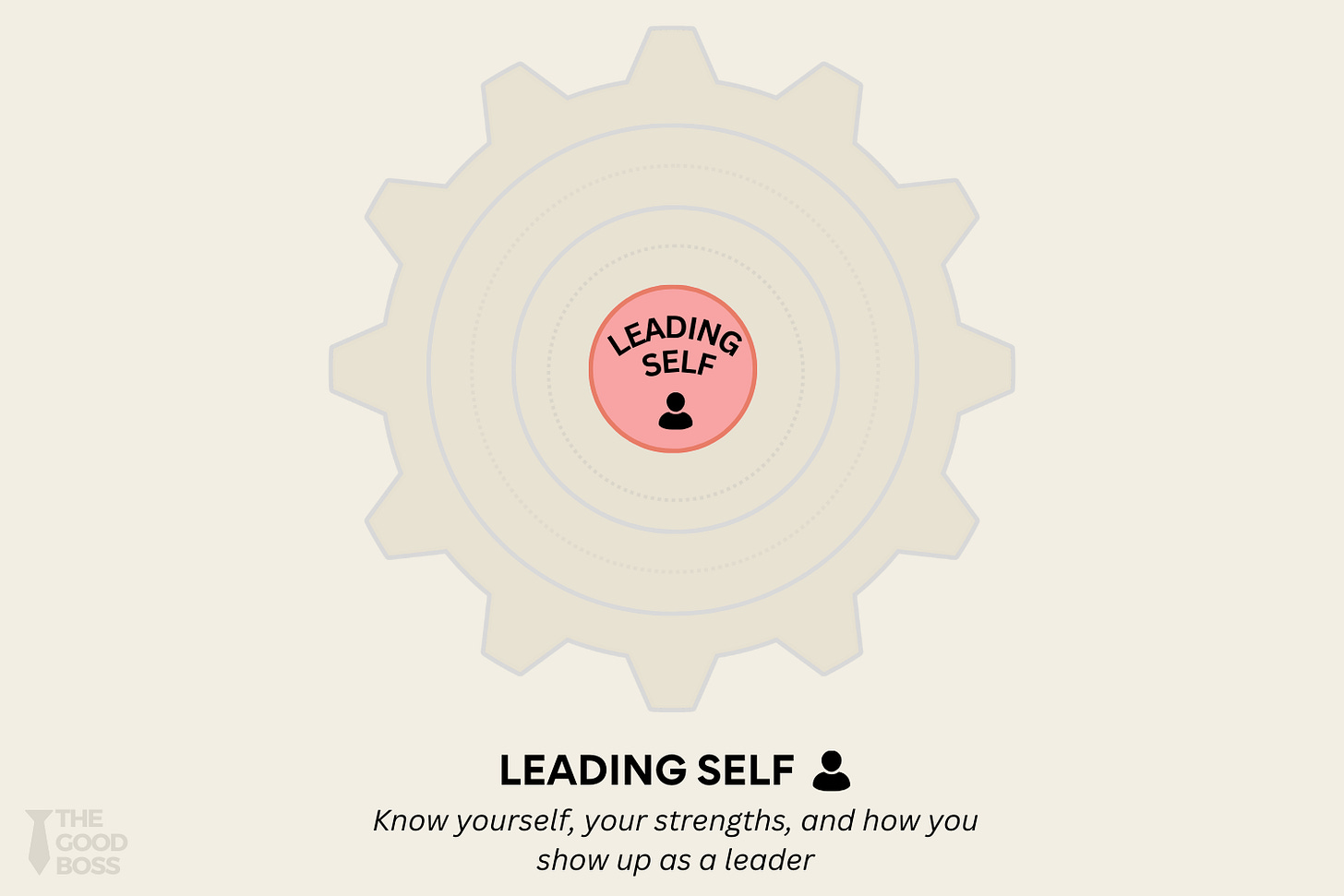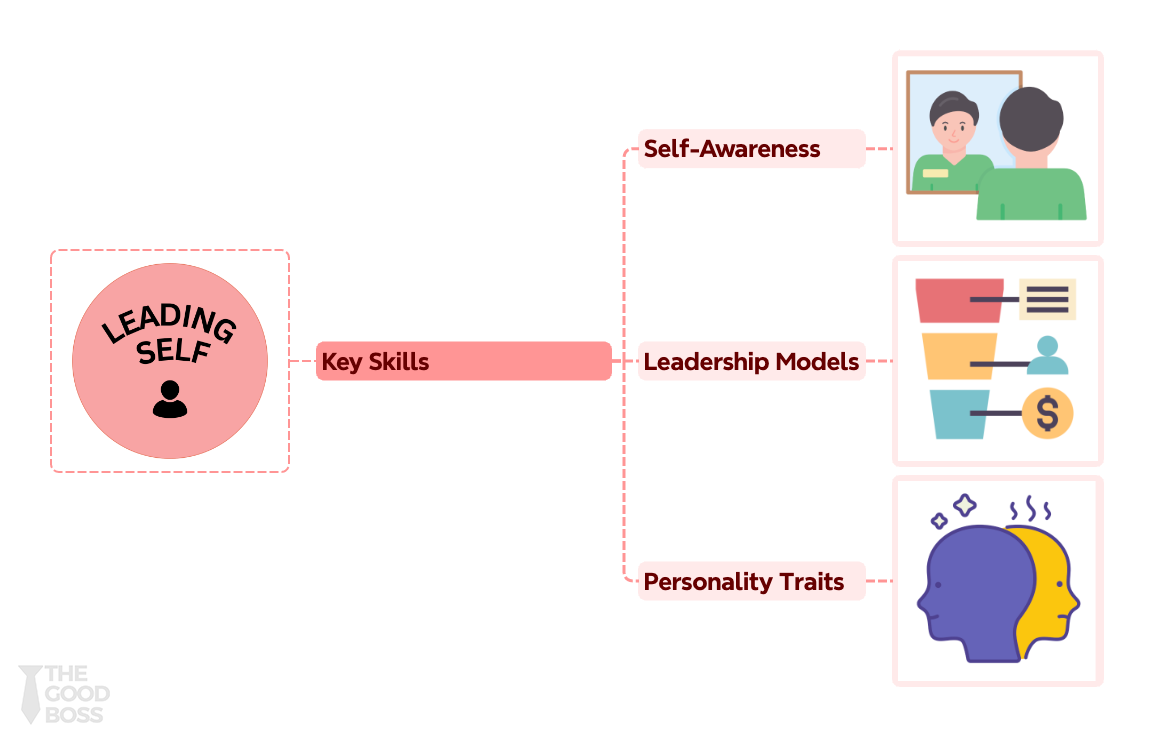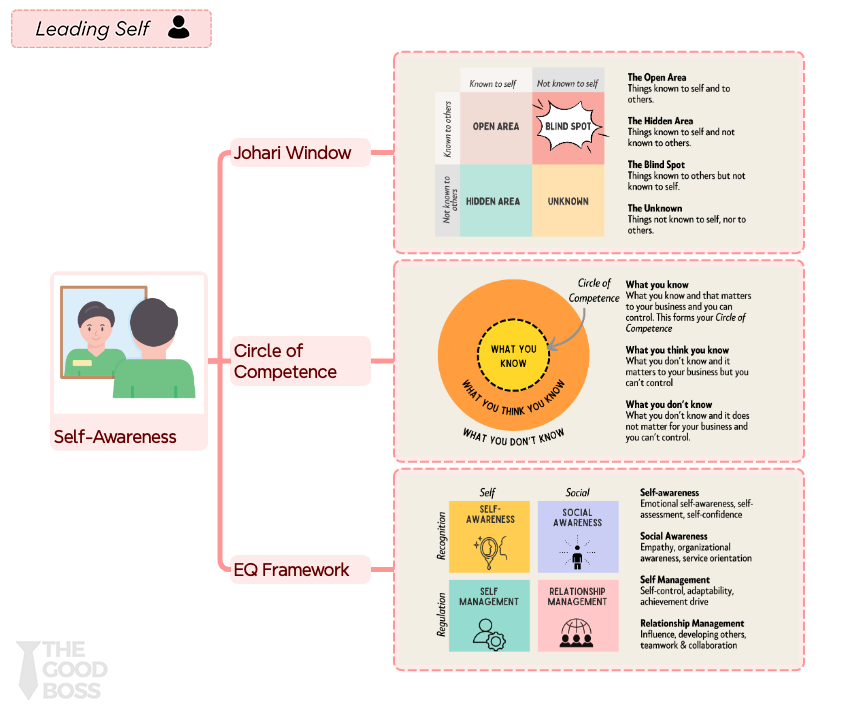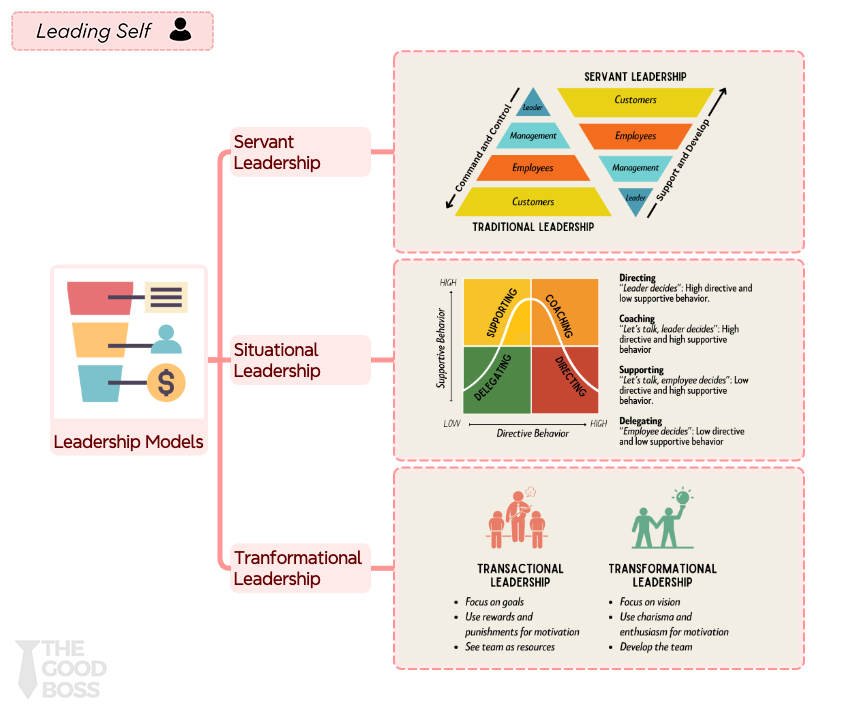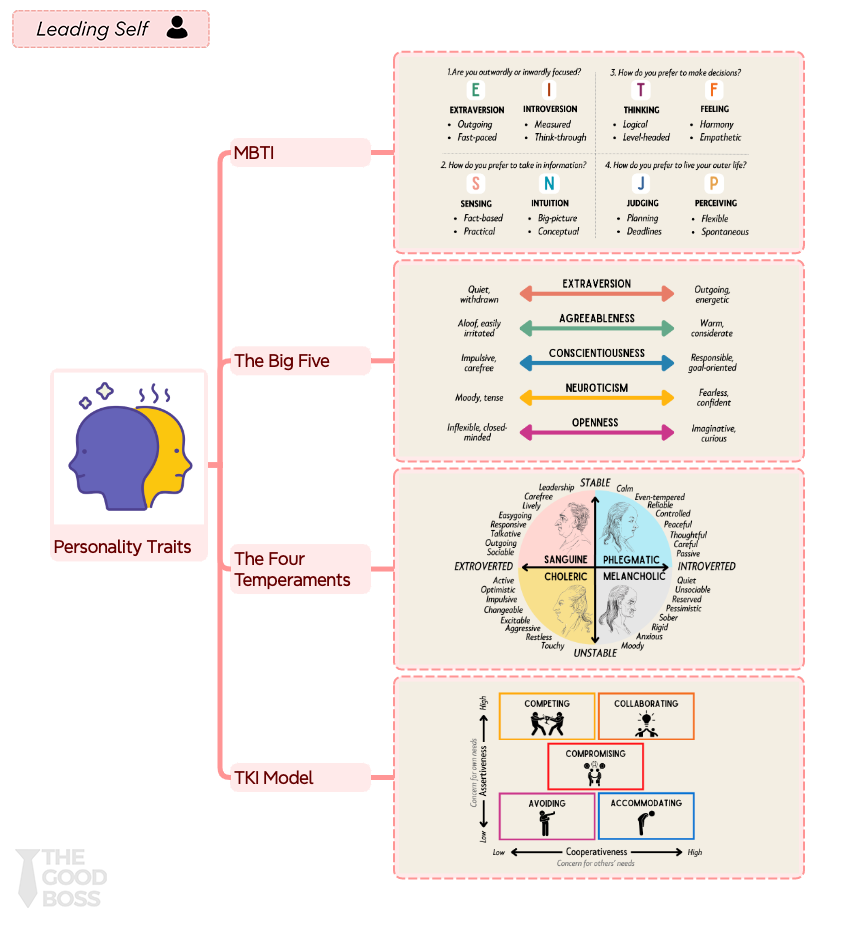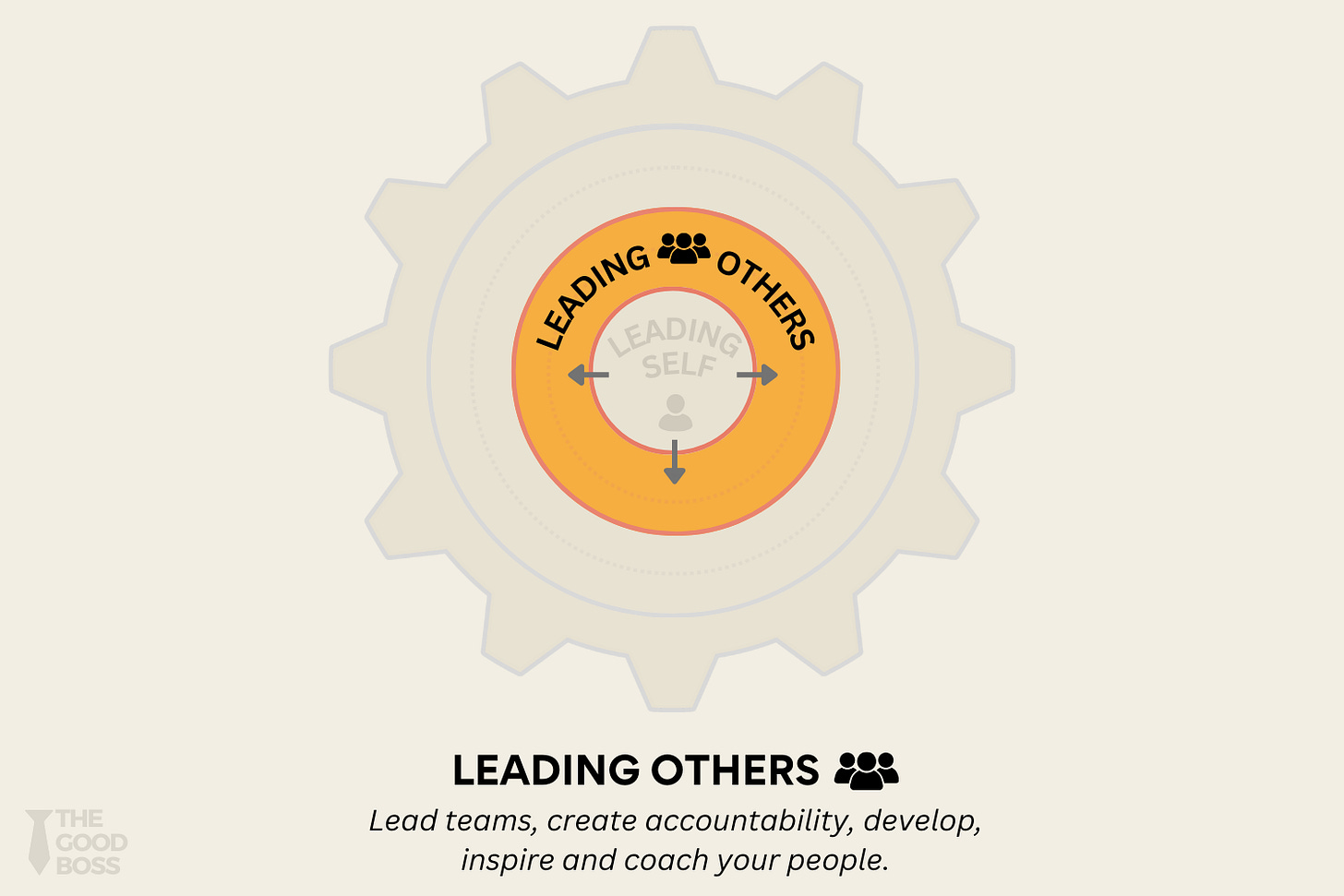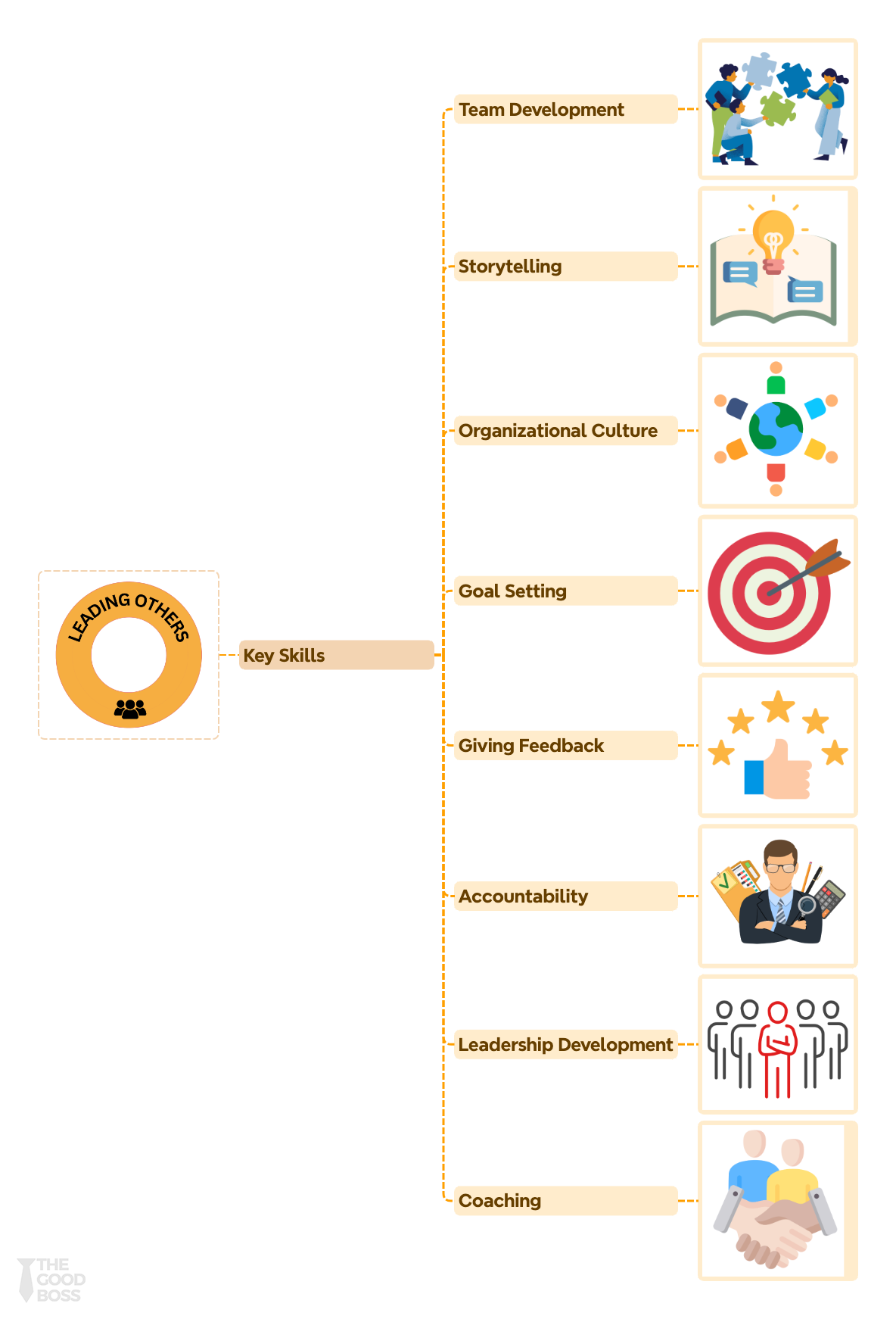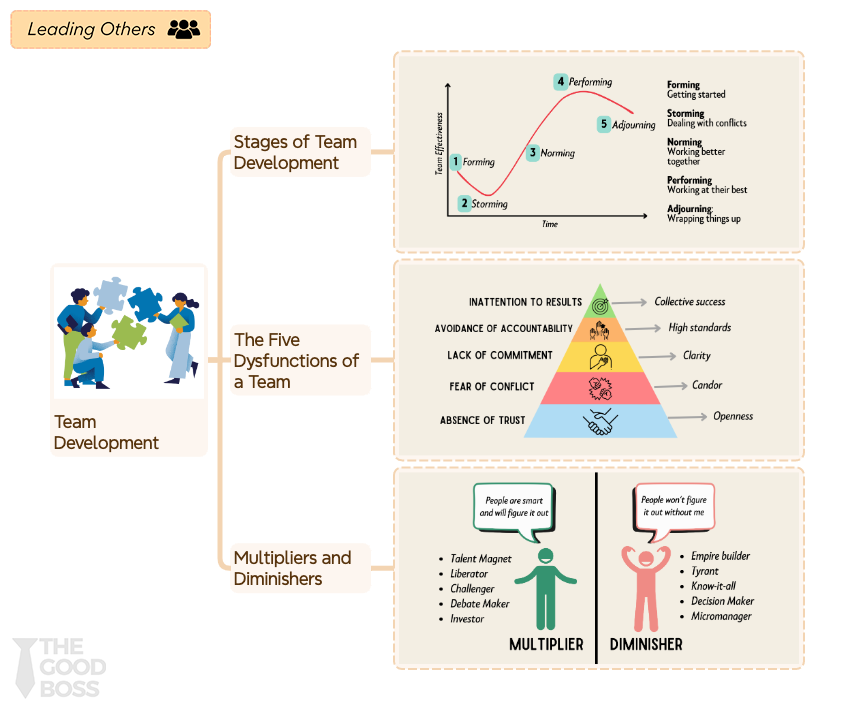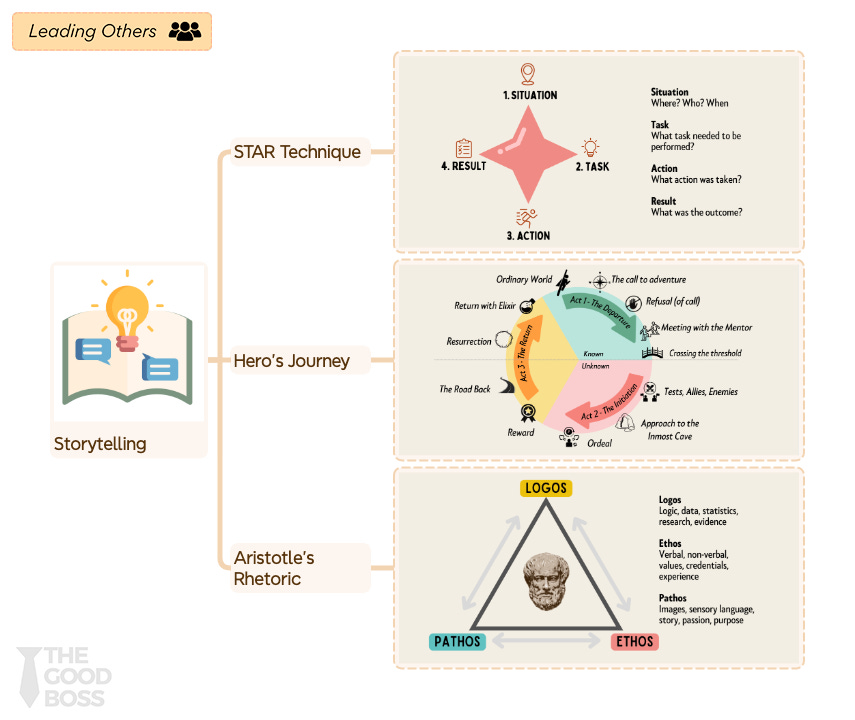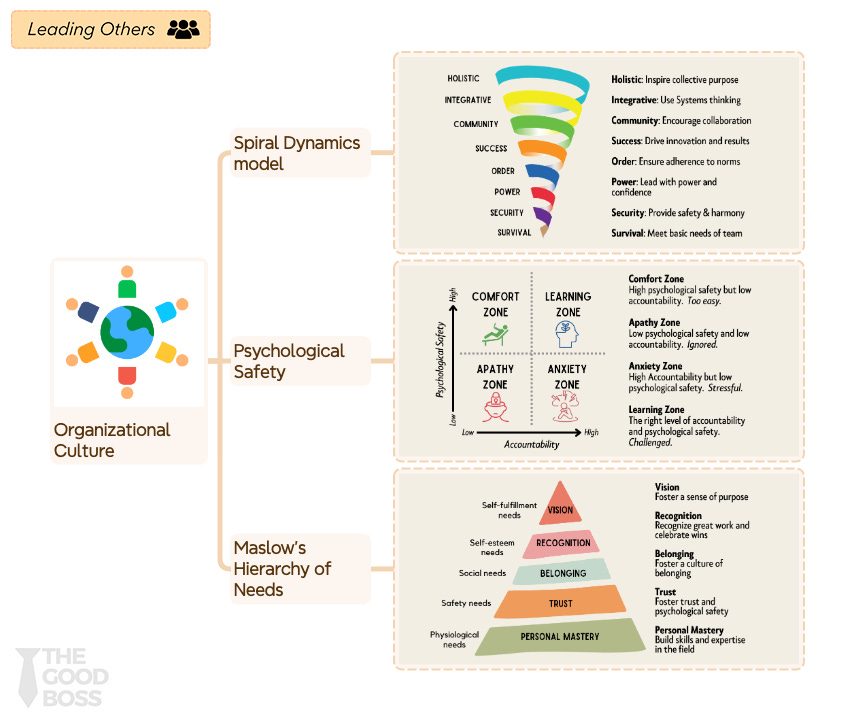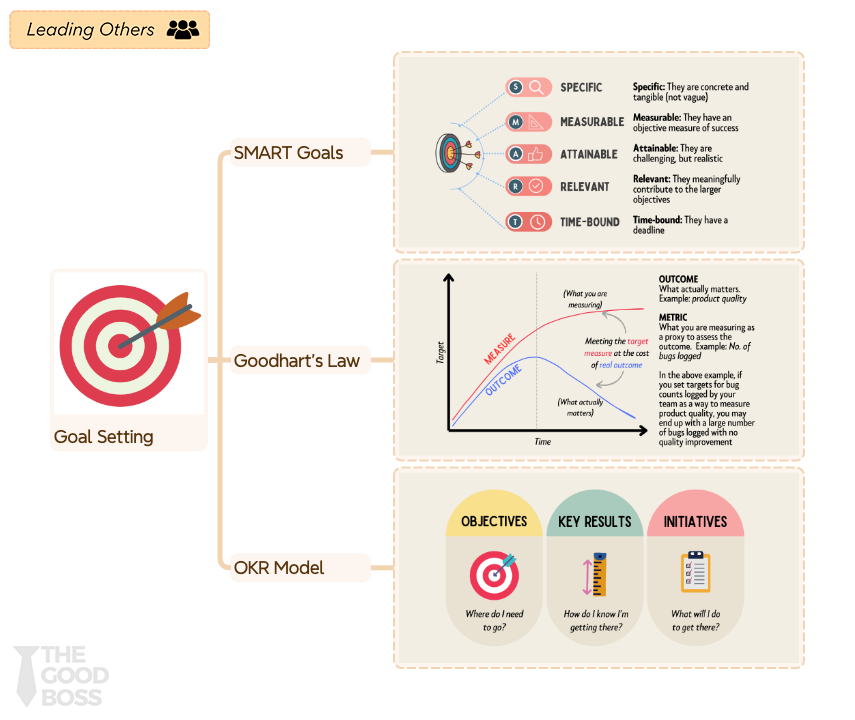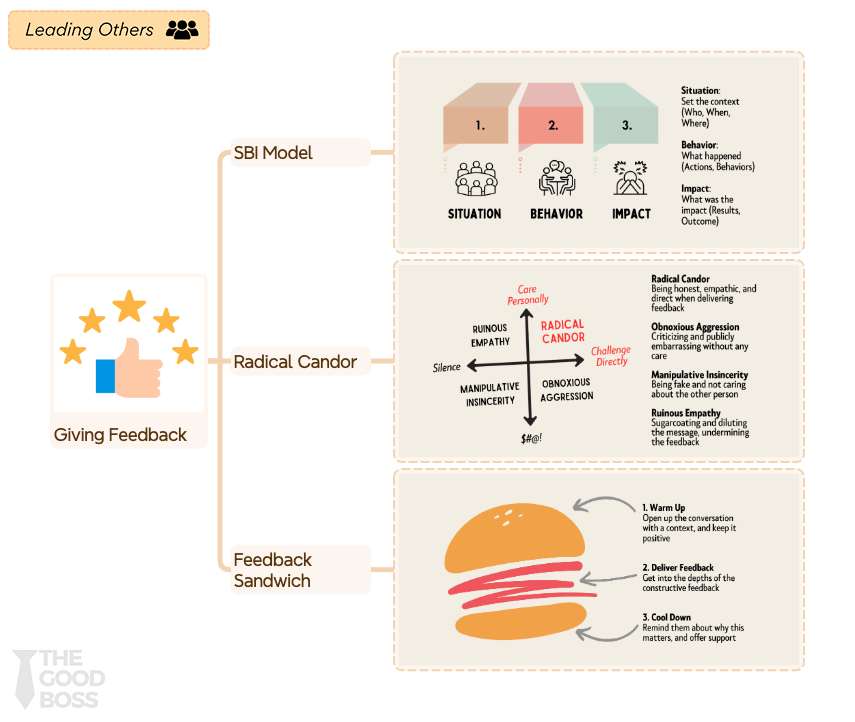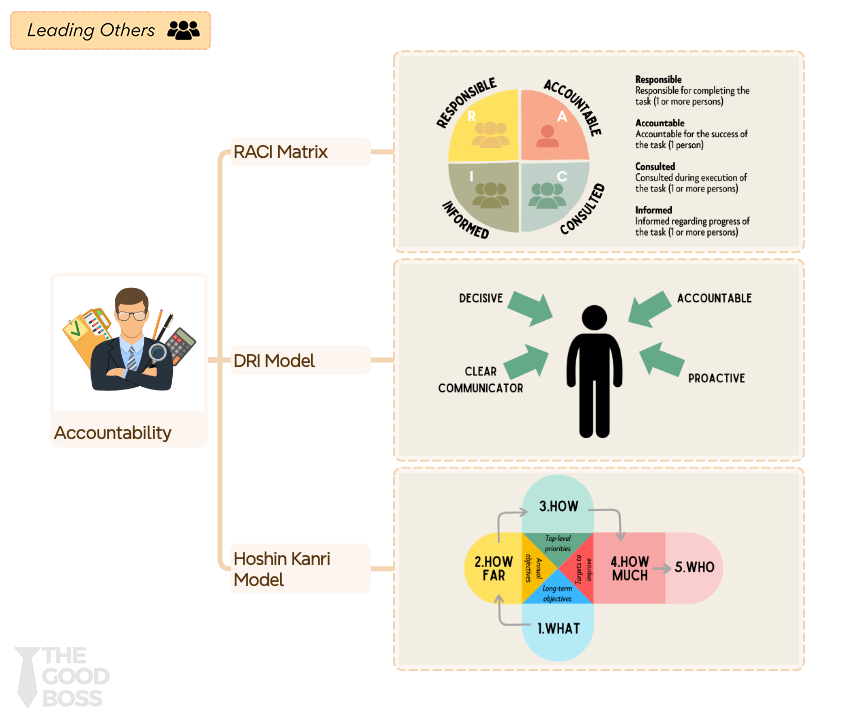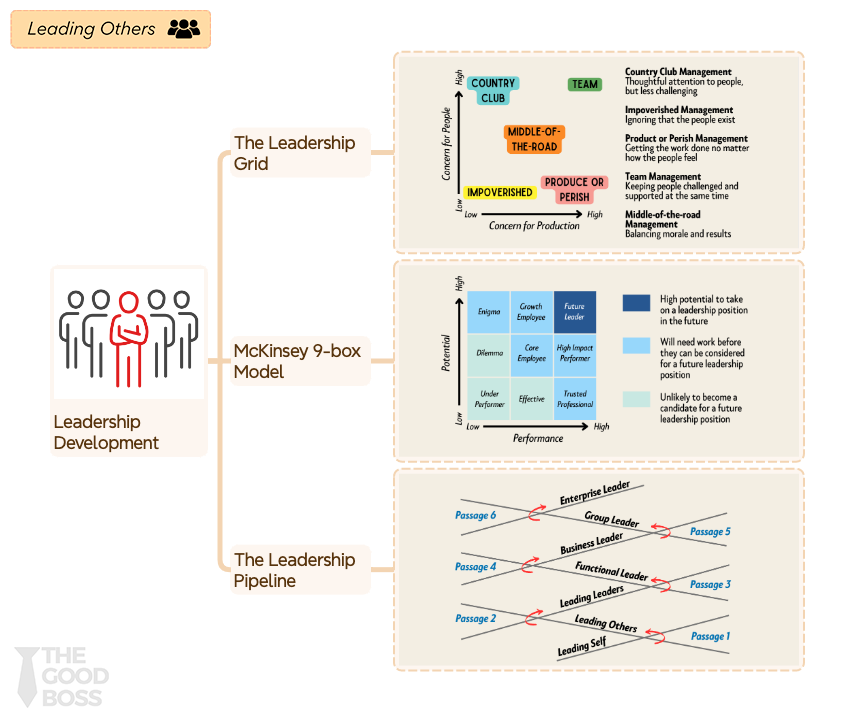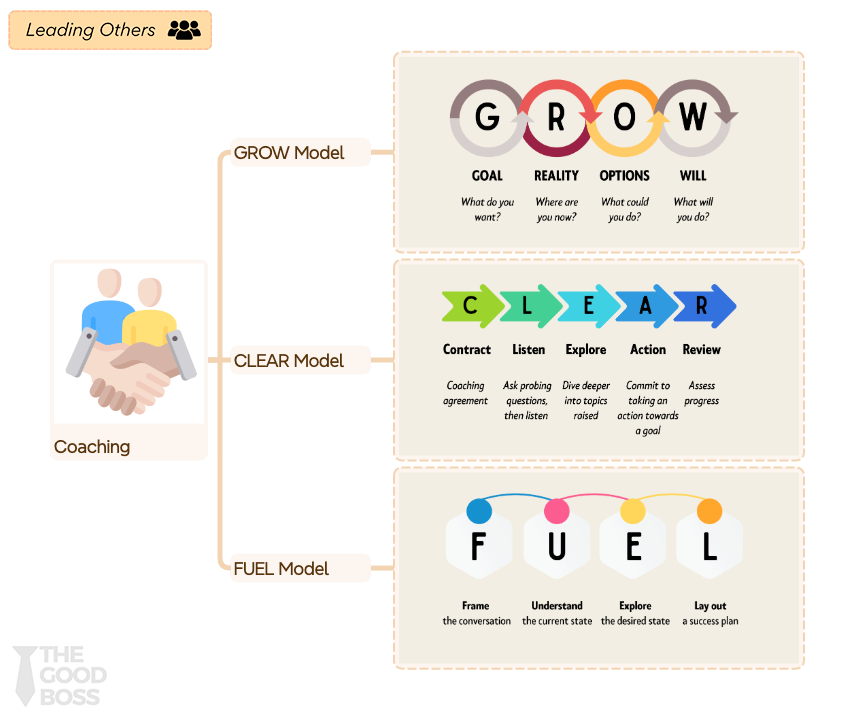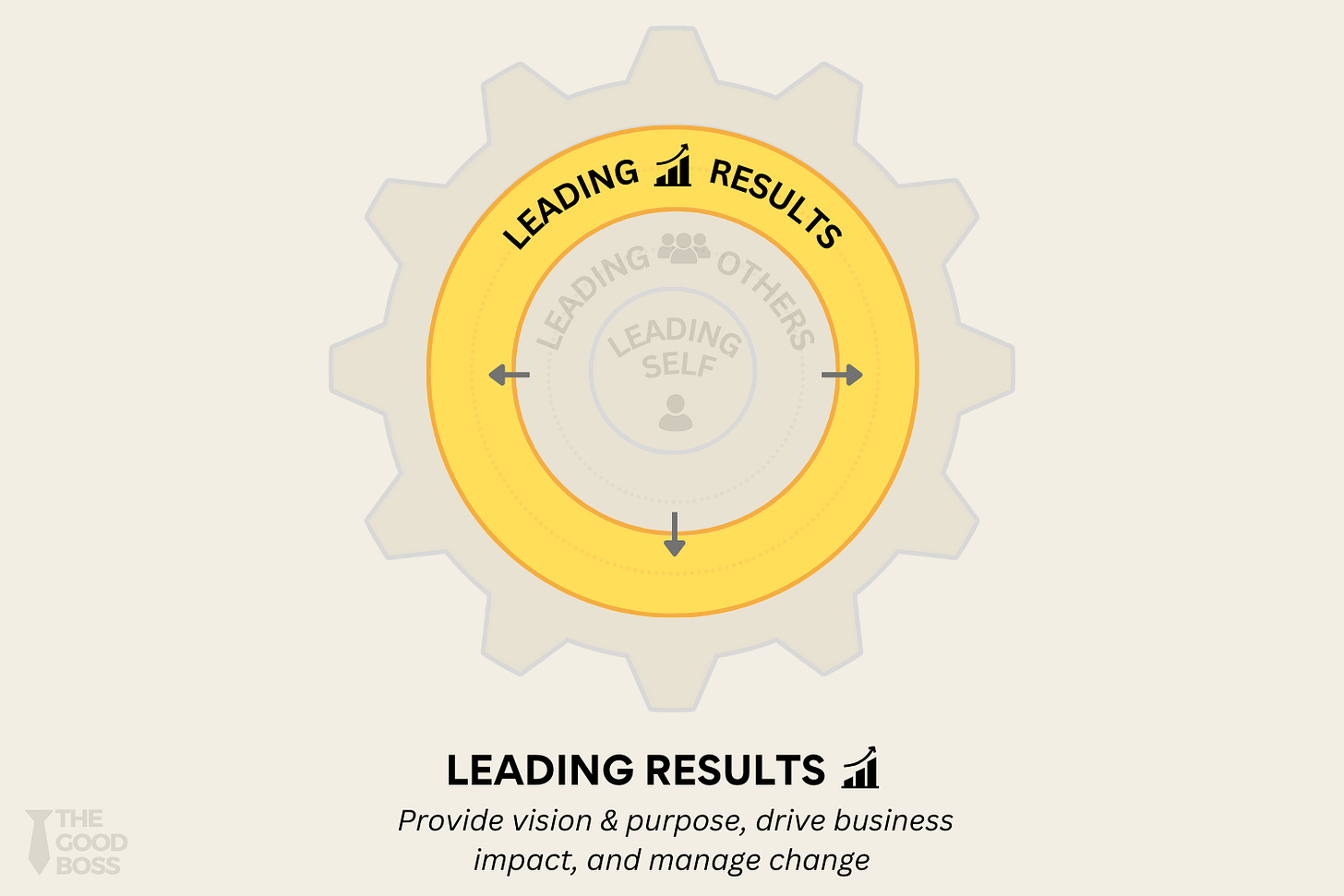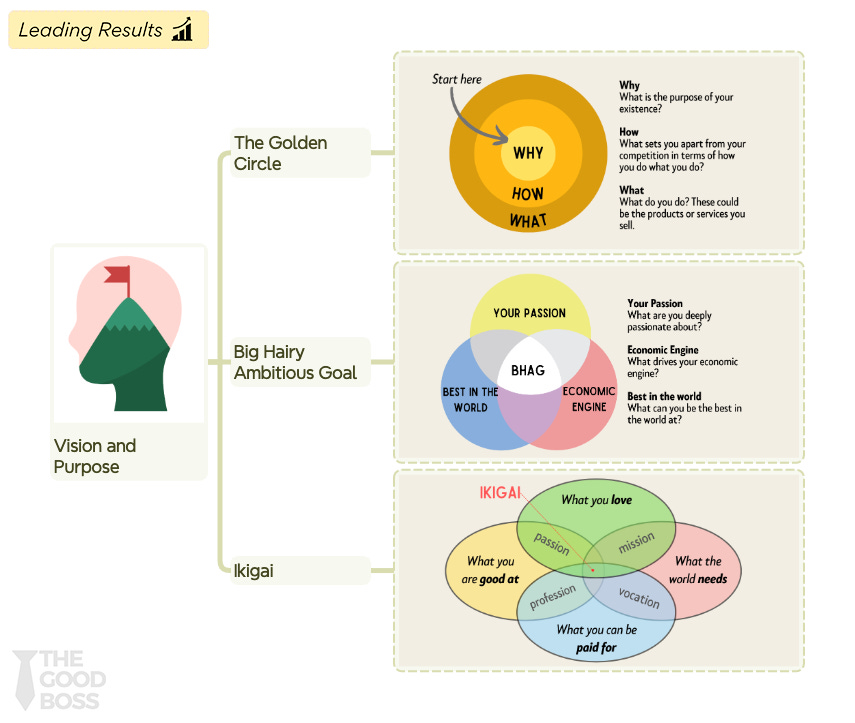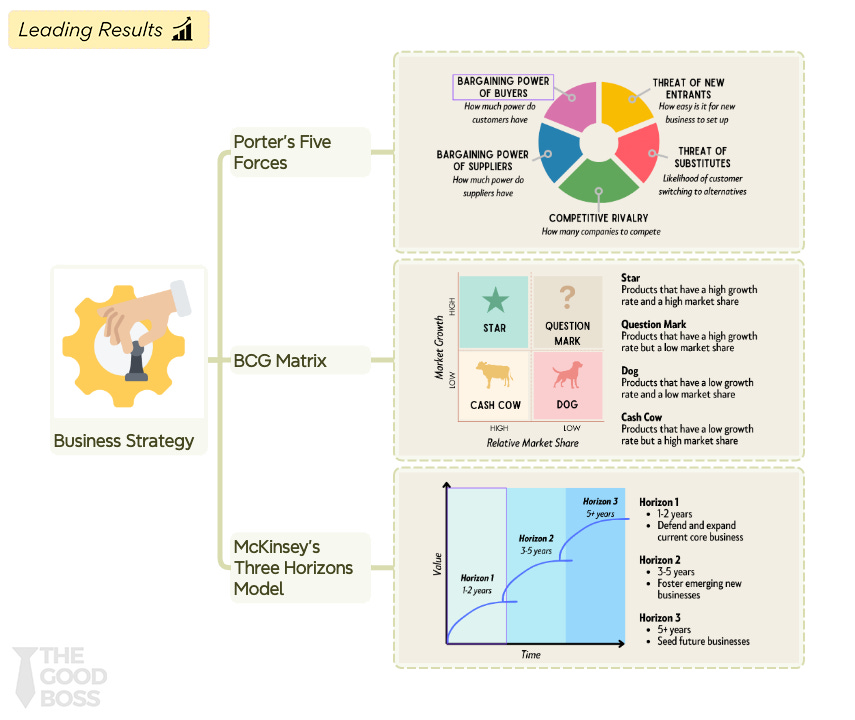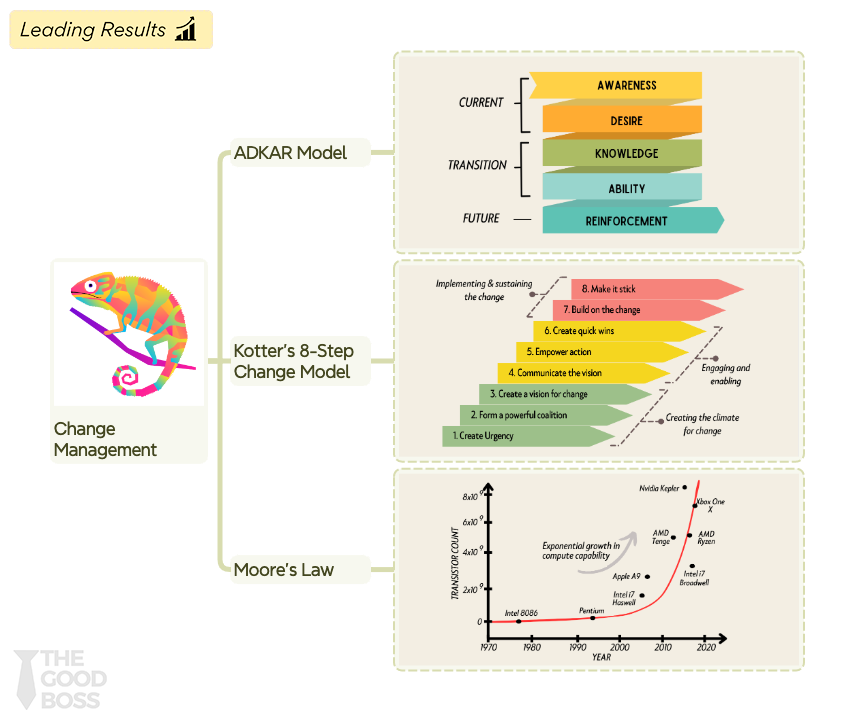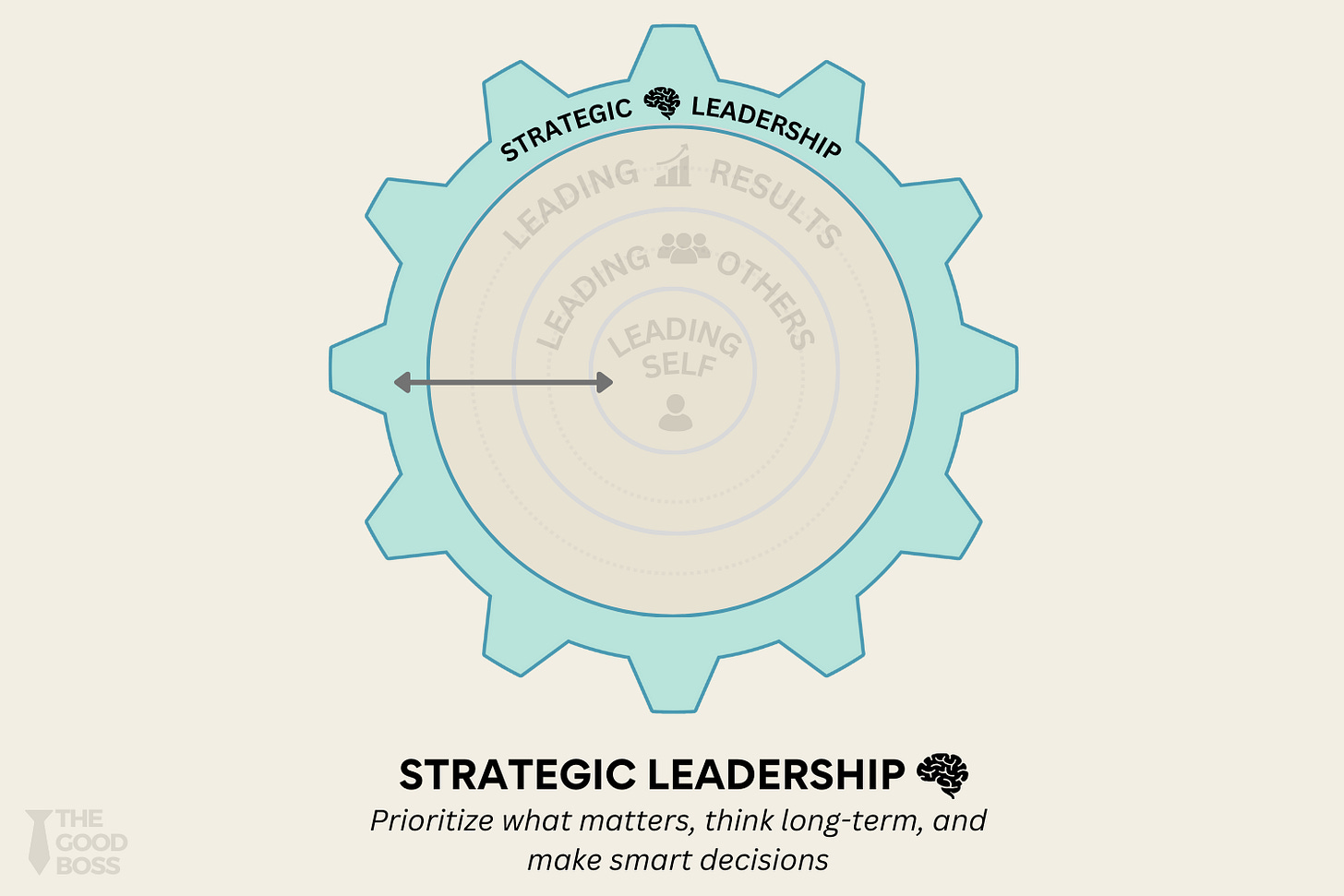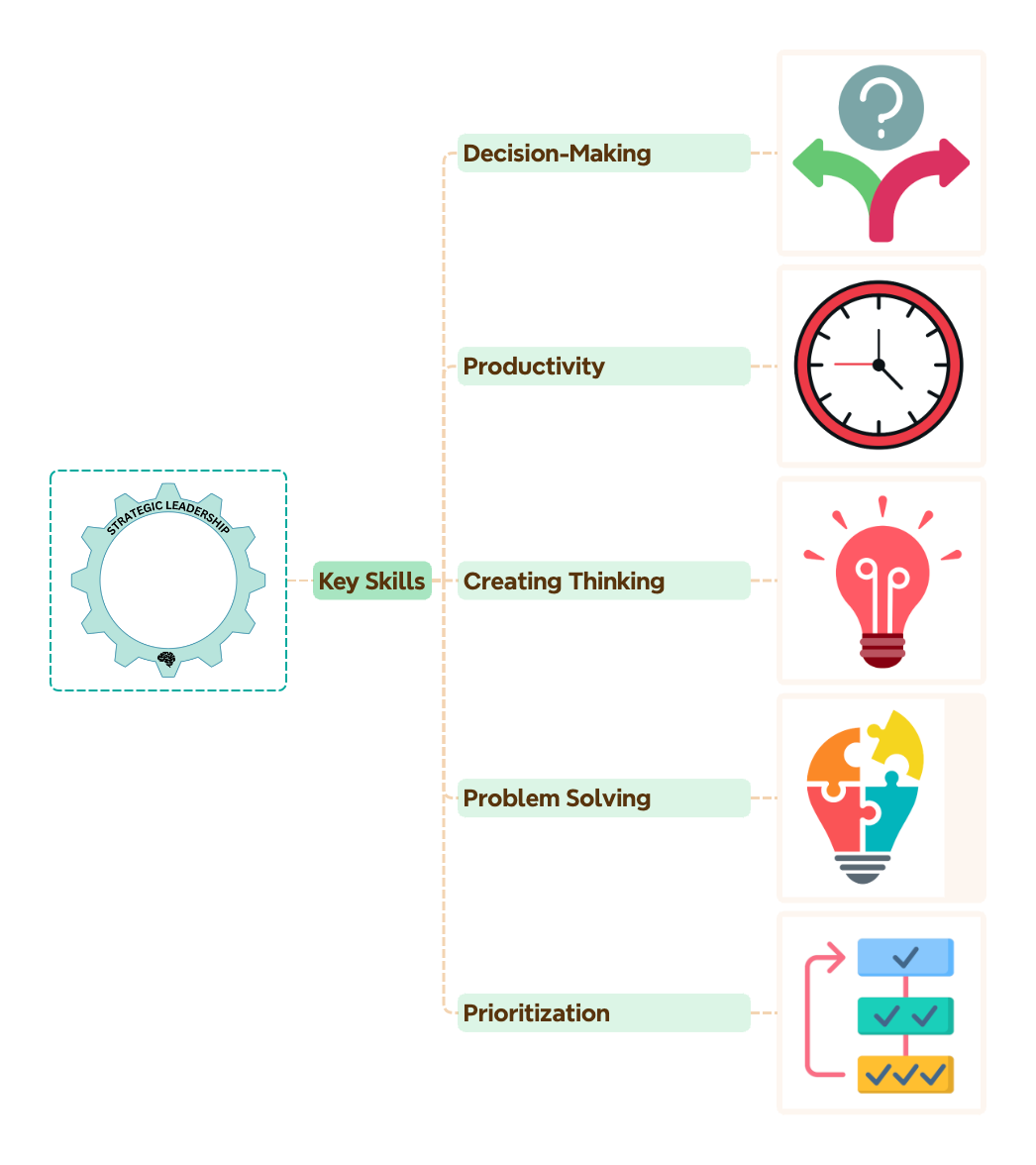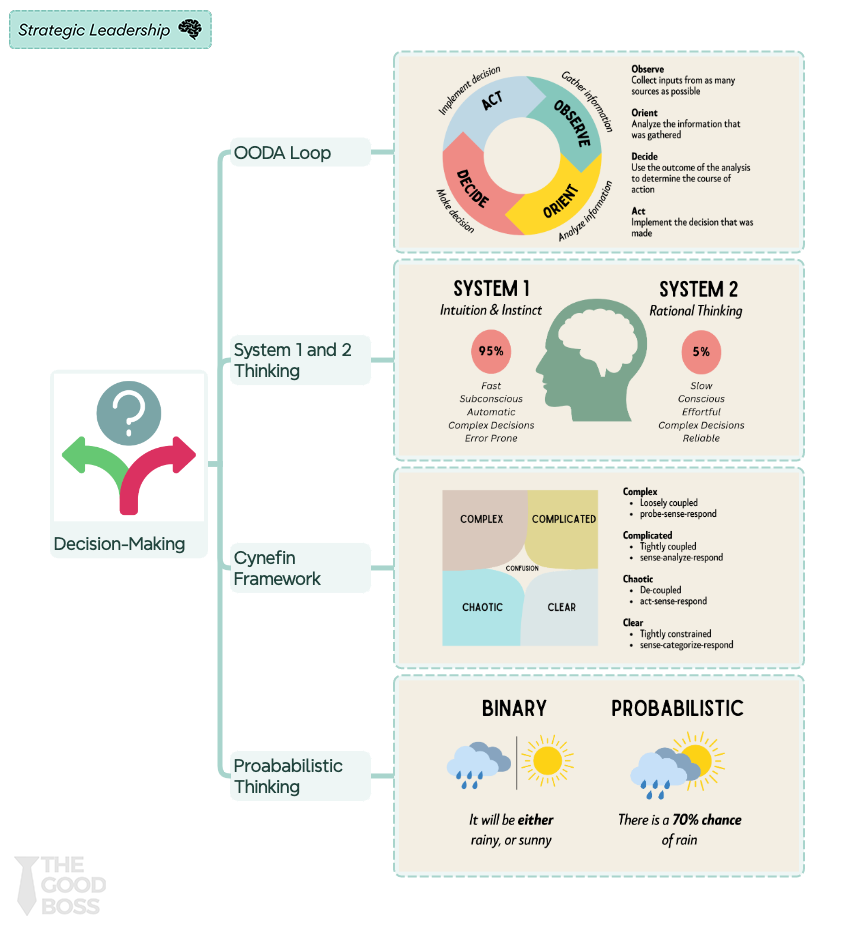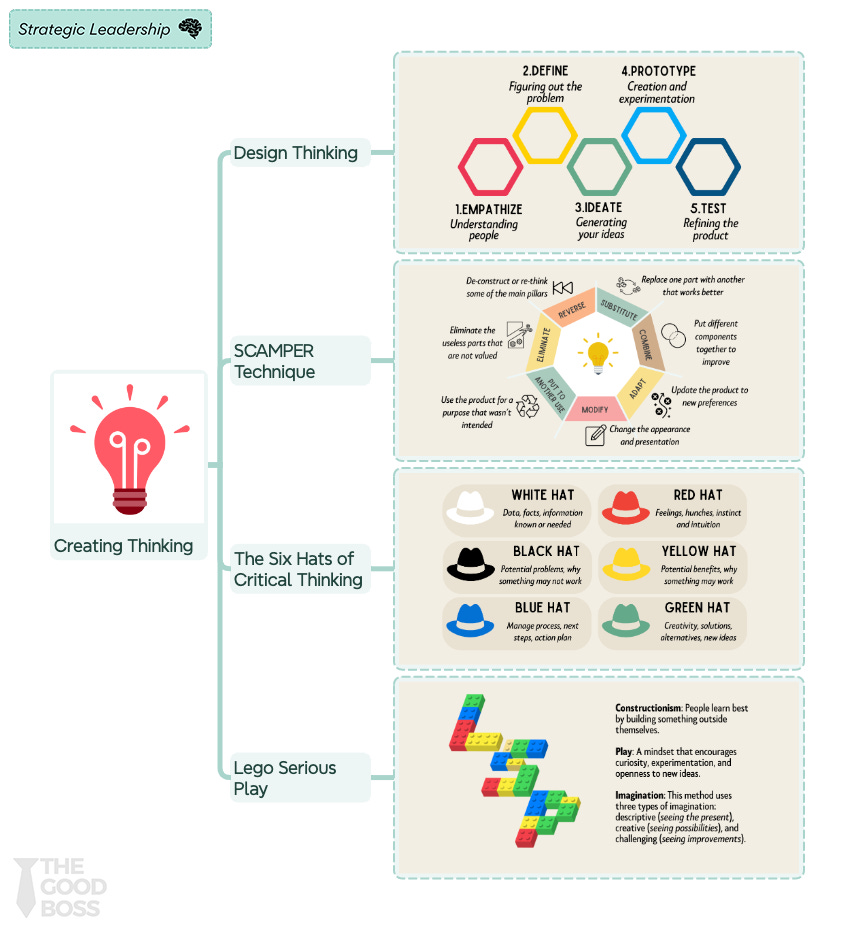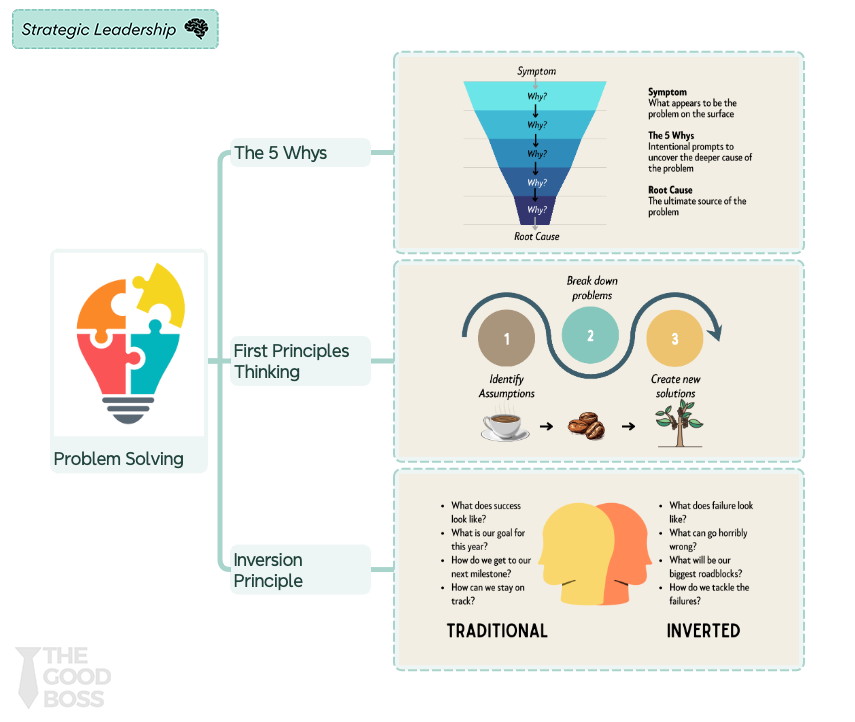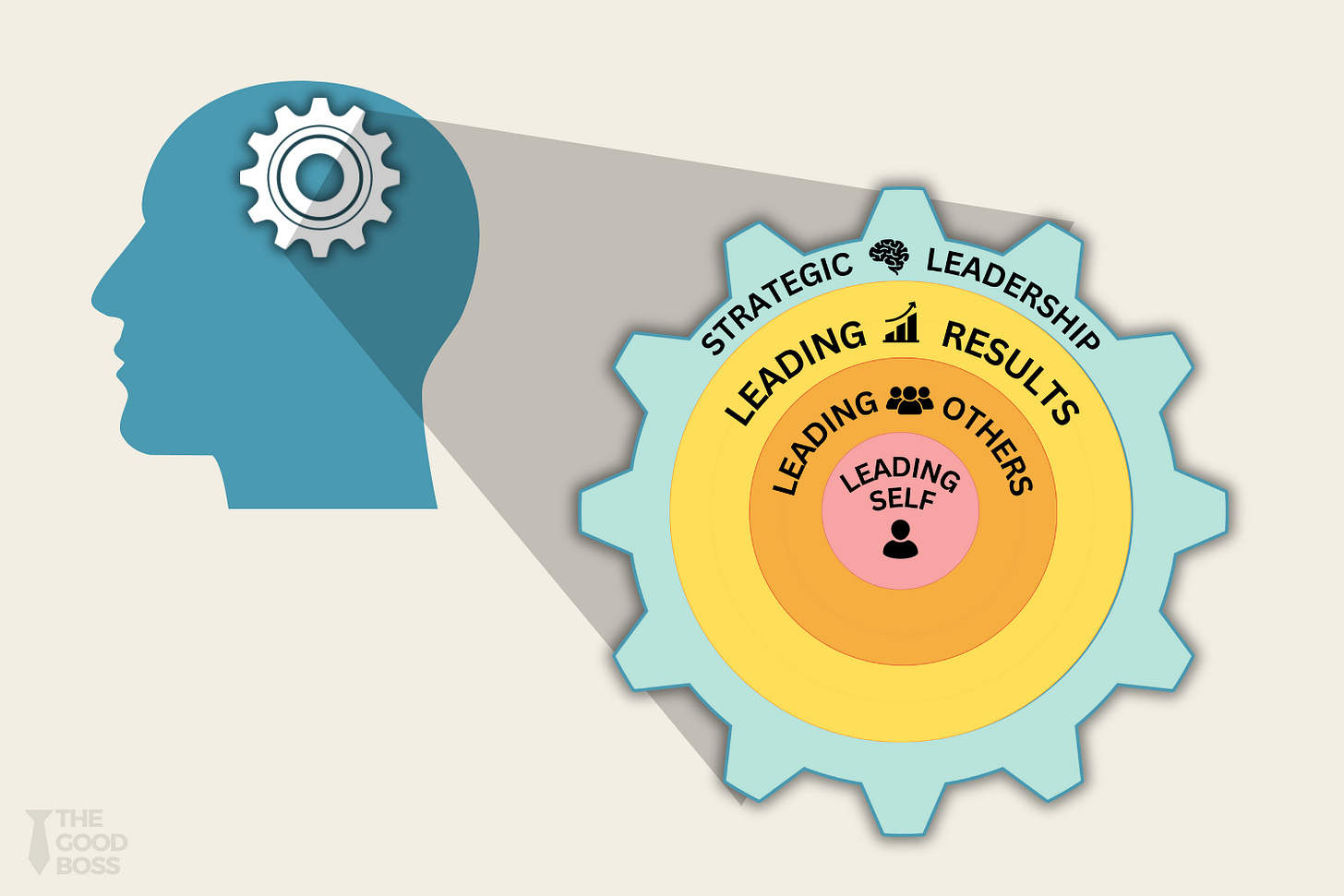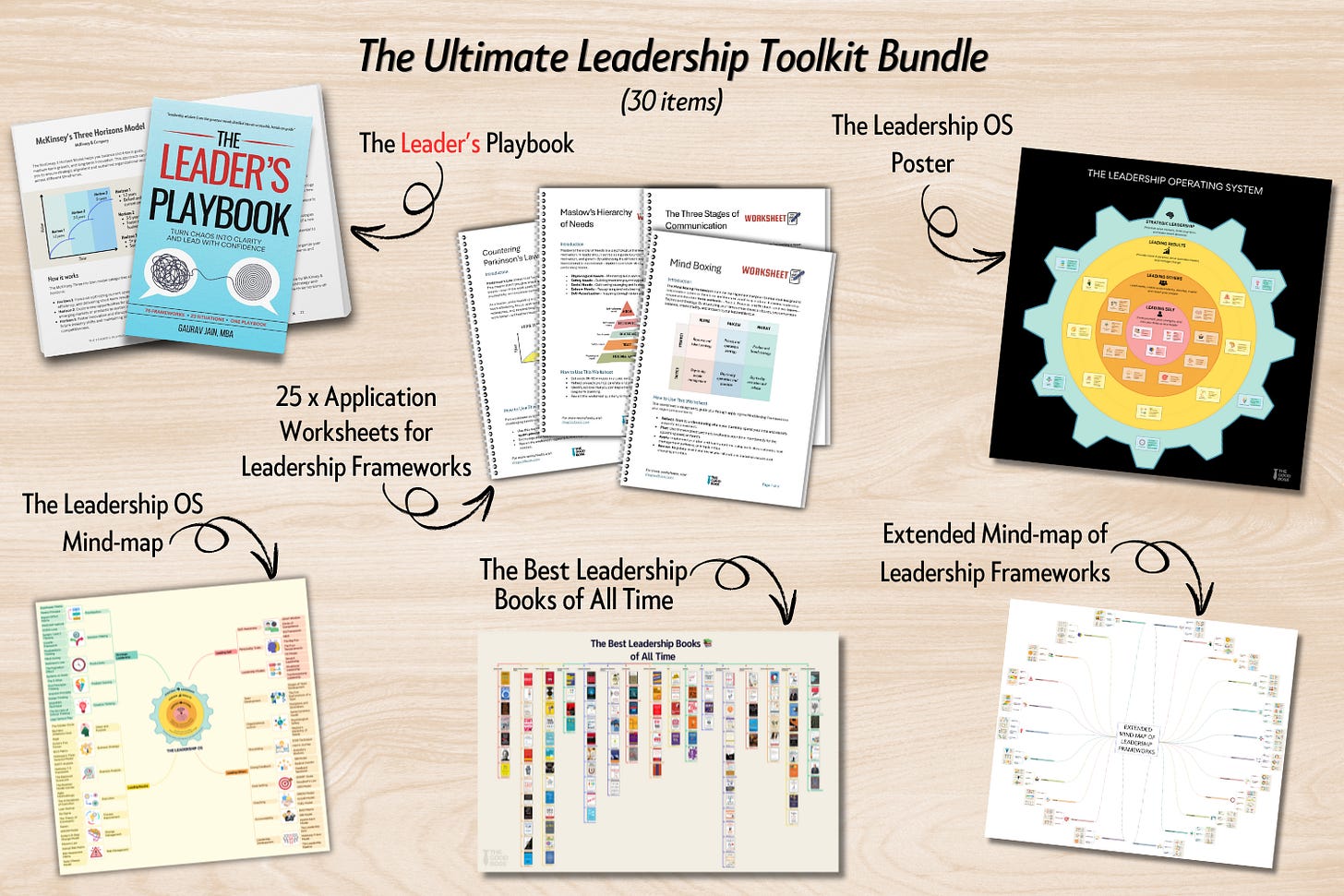The Leadership OS 🧠: The Hidden System Behind Every Great Leader
Discover the 4 Layers, 23 Skills, and 75 Frameworks to Unlock Your Leadership Potential
In this issue:
Introducing: The Leadership OS
Layer 1: Leading Self – The Foundation of Leadership
Layer 2: Leading Others – Mastering Team Leadership
Layer 3: Leading Results – Driving Business Impact
Strategic Leadership – The Skillset that Cuts Across Layers
Bringing It Together – The Leadership OS
Final Thoughts
✨
Most managers approach leadership backward.
They try to drive results without really knowing how to lead people.
They try to lead people without first understanding themselves.
They get stuck in the daily grind and lose sight of what matters most.
No wonder leadership can feel so frustrating.
And it’s especially hard when you’re new to the role. One day, you’re great at your job—then suddenly, you’re managing people, resolving conflicts, setting goals, and making decisions that affect more than just your own work.
The problem is that most companies don’t teach you how to lead. They assume that if you can manage tasks, you can manage people. That if you’re good at getting work done, you’ll figure out leadership on your own.
Introducing: The Leadership OS 🧠
Leadership is complicated—full of uncertainty, risks, and the constant pressure to deliver results.
But the good news is that leadership is a skill. And like any skill, it can be learned, practiced, and improved.
That said, leadership isn’t just a random mix of skills. It’s a system—a set of interconnected, learnable skills that build on each other. And just like any great system, it only works well when all the parts work together.
That’s why I created The Leadership Operating System (OS)—a structured roadmap that helps you build and master the skills that actually matter.
It’s not a hack or a checklist. It’s a full operating system for how to lead—clearly, confidently, and effectively.
Think of it like your phone. Every phone runs on an operating system—and so do you. As a leader, your mindset, decisions, habits, and actions are all powered by your Leadership OS.
The problem is, most people are running on an outdated version. They’re leading based on instinct, trial and error, or whatever they picked up along the way. They haven’t been taught how to upgrade—or they don’t know that they can upgrade.
The good news is that, just like your phone’s OS, you can upgrade your Leadership OS. You can build new skills, refine old skills, and lead with confidence, no matter where you’re starting from.
Here’s a quick preview of how the system works:
Layer 1: Leading Self – Know yourself, your strengths, and how you show up as a leader. This is the foundation (or the core) of the system.
Layer 2: Leading Others – Once you understand yourself, you can lead others—build trust, give feedback, coach, and hold people accountable.
Layer 3: Leading Results – With the right team in place, it’s time to focus on vision, execution, and driving real business impact.
Strategic Leadership – These are the skills that cut across all layers: thinking long-term, solving problems, and making smart decisions.
In this article, I will take you through a whirlwind tour of the Leadership OS, how it works, and how you can leverage it.
Before we get started, though, a word of caution: this is more than just an article. Consider it your field guide (or a crash course, if you like.)
So grab your favorite drink ☕️, your notebook 📒, and enjoy the learning experience 🎓 (and don’t forget to thank me later!)
Let’s dive in.
Layer 1: Leading Self – The Foundation of Leadership
Have you ever worked for a leader who was completely out of touch with themselves?
Well, I certainly have, many times over. I have worked with leaders who overreacted to small problems, shut down when faced with conflict, or lacked the confidence to make tough decisions.
They were leaders by title, but didn’t have the skills or the aptitude to lead effectively.
That’s what happens when leaders skip this first layer—Leading Self—the most fundamental part of the leadership engine.
Leading yourself means knowing yourself, your strengths, and how you show up as a leader.
It’s about understanding how you think, how you react, and how your leadership affects those around you.
Without this foundation, you might find yourself making impulsive decisions, struggling to gain respect, or burning out because you don’t know your own limits.
A study by Korn Ferry found that leaders with high self-awareness lead teams with 30% higher engagement and performance. When you understand yourself, you make better decisions, communicate more effectively, and handle stress with clarity.
If you’ve ever wondered why leadership sometimes feels exhausting, it’s often because you’re spending too much energy reacting to problems. Developing the skills in this layer will help you lead with intention and put your best foot forward in each situation.
Key Skills in Layer 1 - Leading Self
The key skills to develop in this layer include:
Self-Awareness: Knowing how you think, act, and come across to others
Leadership Models: Understanding different leadership styles and which one fits you
Personality Traits: Recognizing how your personality shapes your leadership
Next, let’s discuss each of these skills in a little more detail.
Self-Awareness: The #1 Leadership Superpower
"If you don’t know yourself, how can you expect to lead others?"
Self-awareness might be the most fundamental leadership skill—and yet, most leaders don’t have it.
A Harvard Business Review research found that 95% of people think they are self-aware, but only 10-15% actually are. That means most leaders have blind spots about how they come across.
Have you ever worked for a boss who thought they were inspiring, but their team found them demanding and stressful? Or someone who believed they were decisive, but their team saw them as impulsive and reckless?
That’s what happens when leaders lack self-awareness.
How to Build Self-Awareness as a Leader
You build self-awareness by taking time to reflect, asking for honest feedback, and paying attention to how your actions affect others. It starts with being curious about yourself and open to learning.
These are some popular frameworks that you can use to build self-awareness:
Johari Window – This tool helps you understand the difference between what you know about yourself and what others see. It’s useful for uncovering blind spots and building trust with your team.
EQ Framework – This framework explains emotional intelligence, including self-awareness, self-control, empathy, and social skills. It helps you understand how your emotions affect your actions. Based on the work of Daniel Goleman in his book Emotional Intelligence.
Circle of Competence – This idea reminds you to focus on what you truly know well, and to admit what you don’t. It helps you stay grounded and avoid overconfidence. Popularized by Warren Buffett and Charlie Munger.
👉 Takeaway: Great leaders understand themselves. They know their strengths, admit their blind spots, and are always open to learning how they show up to others.
Leadership Models: Finding Your Leadership Style
"There is no single best way to lead. The best leaders adapt their leadership style based on the situation and the people they are leading."
When you first become a leader, it’s tempting to believe that there’s one right way to lead.
Maybe you had a great boss who led with charisma and energy, so you assume that’s what leadership should look like. Or maybe you worked under a strict, results-driven manager, and now you feel like you need to be the same way.
But here’s the truth—effective leadership isn’t about copying someone else’s style. It’s about understanding your natural strengths and adapting your approach based on the situation.
Different situations call for different types of leadership.
A startup founder leading an innovation-driven company might thrive with a transformational leadership style, inspiring people to think big and challenge the status quo. A frontline manager leading a team of technicians might need a servant leadership approach, focusing on removing obstacles and supporting their team. If you apply the wrong leadership style in the wrong context, you can hurt both your team and yourself.
A study by McKinsey found that leaders who adapt their leadership style to different situations are 2.3x more successful in driving business performance. That’s because different people and challenges require different approaches. A new hire might need hands-on coaching, while a seasoned expert might need more autonomy and trust. If you treat both the same way, you risk frustrating one and micromanaging the other.
How to Find and Adapt Your Leadership Style
You can build this skill by learning a few common leadership styles and trying them out in different situations. Over time, you’ll figure out what works best for you and for the people you lead.
These are some popular frameworks that you can use to explore different leadership models:
Servant Leadership – This model is about putting your team first. You focus on helping them do their best work by removing roadblocks and being supportive. The idea comes from Robert Greenleaf’s book The Servant as Leader.
Situational Leadership – Created by Paul Hersey and Ken Blanchard, this model helps you adjust how you lead based on each person’s skill and confidence. Some people may need more direction, others may just need support.
Transformational Leadership – This model is about inspiring people to think big and aim higher. It works well when you’re leading change or trying to get people excited about a new direction. It was introduced by James MacGregor Burns in his book Leadership.
👉 Takeaway: There is no right way to lead. Great leaders know when to guide, when to support, and when to inspire their team.
Personality Traits: How Your Natural Tendencies Shape Your Leadership
"Great leaders don’t just know their strengths—they understand how their personality affects the way they lead."
Your personality influences how you lead, even if you don’t realize it.
Are you an introvert or an extrovert? Do you make decisions based on logic or emotions? Are you naturally structured and organized, or do you prefer to go with the flow? These traits shape your leadership style—and they can either help you or hold you back.
A study from Harvard Business Review found that leaders who understand their own personality traits communicate 47% more effectively with their teams.
When you know your natural tendencies, you can adjust them based on what your team needs. If you’re naturally logical and analytical, you might need to be more aware of emotional cues when giving feedback. If you’re naturally empathetic, you might need to be firmer when making tough decisions.
How to Discover Your Leadership Personality
Discovering your leadership personality is about learning more about your natural preferences—how you think, how you relate to others, and how you respond to stress or conflict.
These are some popular frameworks that you can use to discover your personality traits:
MBTI (Myers-Briggs Type Indicator) – This tool helps you understand your personality type, like whether you’re more introverted or extroverted, or whether you make decisions based more on logic or values. It’s widely used in teams and leadership training.
The Big Five Personality Traits – This model looks at five key traits: openness, conscientiousness, extraversion, agreeableness, and neuroticism. It’s a helpful way to see how your traits influence how you lead, especially under pressure.
The Four Temperaments – This classic model explains behavior using four types: Choleric (bold), Sanguine (social), Melancholic (thoughtful), and Phlegmatic (calm). Each style has its strengths and challenges. For a detailed discussion of this framework, including application strategies for leaders, check out The Four Temperaments: Understanding Yourself, Your Team, and Your Boss.
TKI Model (Thomas-Kilmann Conflict Mode Instrument) – This framework helps you understand how you deal with conflict. It shows five styles—competing, collaborating, compromising, avoiding, and accommodating—and helps you know when to use each one.
👉 Takeaway: Your personality isn’t something to fix—it’s something to understand. When you know your natural style, you can lead more effectively and grow where it matters most.
Enjoying the read? Hit the ❤️ button and share/restack ♻️ it with others who might find it helpful.
Subscribe to The Good Boss to get free articles like this every week.
Layer 2: Leading Others – Mastering Team Leadership
Once you’ve built self-awareness, the next step is learning how to lead others effectively.
Great leadership isn’t just about having a title—it’s about building strong relationships with your team. Without trust, communication, and clear expectations, even the most talented teams will struggle.
Think about the best boss you’ve ever had. What made them great? Chances are, they gave you helpful feedback, supported your growth, coached and mentored you, and create a culture of accountability and psychological safety. On the flip side, think about the worst boss you’ve had. Maybe they micromanaged, avoided difficult conversations, or took credit for your work. Ugh!
The way a leader treats their team says a lot about the depth of their leadership.
A Gallup survey found that teams with strong leadership are 21% more productive and have 59% lower turnover.
If you want to build a team that actually enjoys working with you (and stays motivated), you need to focus on leading people well.
Key Skills in Layer 2 - Leading Others
The key skills to develop in this layer include:
Team Development – Building high-performing teams.
Storytelling – Using narratives to inspire and communicate.
Organizational Culture – Fostering trust, safety, and values.
Goal Setting – Setting clear, meaningful goals for teams.
Giving Feedback – Providing constructive, actionable feedback.
Accountability – Creating ownership and responsibility.
Leadership Development – Growing future leaders.
Coaching – Helping individuals reach their full potential.
Next, let’s discuss each of these skills in a little more detail.
Team Development: Building a High-Performing Team
"If you want to go fast, go alone. If you want to go far, go together."
A great team doesn’t happen by accident.
It takes effort, patience, and leadership. If you don’t actively develop your team, you’ll end up with a group of individuals working in silos, with little collaboration or trust.
When teams lack clear leadership, you’ll start to see miscommunication, missed deadlines, and even conflicts between team members. You’ll have some people pulling all the weight while others disengage. Your team may not feel comfortable speaking up for fear of conflict or retaliation.
Research has shown that great leaders actively guide their teams through different phases of development, help them build trust with each other, and empower them to take ownership.
How to Develop a High-Performing Team
You build strong teams by paying attention to how people work together, not just what they do. This means guiding your team through tough situations, creating trust, and helping each person grow in their role.
These are some popular frameworks that you can use to develop a high-performing team:
Tuckman’s Stages of Team Development – This model shows how teams grow through five stages: forming, storming, norming, performing, and adjourning. As a leader, your role is to help your team move through these stages. Check out this post for a detailed discussion of this framework, including application strategies for leaders: The 5 Stages of Team Development: Tuckman's Model.
The Five Dysfunctions of a Team – This model from Patrick Lencioni's book The Five Dysfunctions of a Team helps you fix common problems like lack of trust, fear of conflict, and weak accountability. It’s a great tool for building a healthier team culture.
Multipliers & Diminishers – Based on Liz Wiseman’s book Multipliers, this framework helps you reflect on whether you’re bringing out the best in your team—or accidentally holding them back. Multipliers create space for others to think and lead, while Diminishers limit their team without meaning to.
👉 Takeaway: High-performing teams don’t happen by chance. As a leader, it’s your job to actively shape the culture and guide your team through challenges.
Storytelling: The Secret to Motivating and Inspiring Your Team
"People don’t remember facts. They remember stories."
Most leaders over-explain things. They rely on spreadsheets, data, and logic to make their case, assuming that if they just lay out the facts, people will follow.
But that’s not how people work.
If you want to truly inspire action, you need to tell compelling stories. Research from Stanford University found that people remember stories 22 times more than facts alone. When leaders use storytelling, they make their message more engaging, memorable, and meaningful.
Think about some of the greatest leaders in history—Steve Jobs, Martin Luther King Jr., Barack Obama. What do they have in common?
They were all incredible storytellers. They didn’t just talk about what they were doing—they painted a picture of why it mattered.
How to Use Storytelling in Leadership
You build this skill by learning how to share real experiences in a way that people remember and connect with. A good story makes your message stick—and helps your team feel something, not just hear something.
These are some popular frameworks that you can use for storytelling:
STAR Technique – This stands for Situation, Task, Action, and Result. It helps you structure stories clearly, especially when explaining the challenges you’ve faced and how you handled them.
Hero’s Journey – This classic storytelling model follows a hero through a challenge, struggle, and transformation. You can use this to show your team how obstacles lead to growth, and to build emotional connection.
Aristotle’s Rhetoric – This model teaches you to persuade through logic (logos), emotion (pathos), and credibility (ethos). It helps you balance facts with feelings so your message lands with both the head and the heart. For a detailed deep-dive of this framework, check out this post: The 3 Secret Ingredients to Becoming a Master Persuader.
👉 Takeaway: If you want your team to connect with your message, facts alone won’t do it. Use stories to inspire, relate, and make your vision real.
Organizational Culture: The Glue That Holds Teams Together
Have you ever worked on a team where people were afraid to speak up? Where mistakes were hidden instead of addressed? Where leadership felt distant and disconnected?
Where elephants would lurk around rooms in plain sight?
That’s what happens when the culture is broken.
Culture isn’t about perks like free coffee or casual Fridays. Culture is not what your leadership is showing you in their presentations, nor what’s on the posters on the walls.
Culture is how people “feel” on the ground.
It’s how people interact, how decisions are made, and whether people feel safe to share their ideas. Research from Google’s Project Aristotle found that psychological safety is the #1 predictor of high-performing teams. When people feel safe to speak up, they collaborate better, innovate more, and avoid costly mistakes.
One of the biggest mistakes leaders make is assuming culture will take care of itself. But culture is shaped by what you tolerate, what you reward, and how you handle tough situations. If you ignore toxic behavior, it spreads. If you fail to recognize great work, motivation drops.
How to Shape a Strong Culture
You shape culture by how you show up every day—what you say, what you reward, and what you let slide. To build a strong culture, you need to be intentional about the environment you're creating and how your team experiences it.
These are a few models you can use to shape your team culture:
Spiral Dynamics Model – This model helps you understand how people's values and behavior change as they evolve. It can give you insight into what motivates your team and how to meet them where they are.
Psychological Safety – This concept, introduced by Amy Edmondson, is about creating a space where people feel safe to speak up, take risks, and be themselves without fear. It’s the foundation of innovation and trust in any team.
Maslow’s Hierarchy of Needs – This model shows how people are motivated by different needs—starting with basics like safety and belonging, and moving up to growth and purpose. As a leader, understanding where your team is on this pyramid helps you lead them better. Check out this post for a detailed discussion of this framework, including application strategies for leaders: Maslow's Hierarchy of Needs in Leadership.
👉 Takeaway: Your team’s culture is shaped by what you allow, what you encourage, and how you lead. If you’re not shaping it on purpose, you’re still shaping it—just not in the way you might want.
Goal Setting: Creating Clarity and Focus
“One of the biggest reasons teams struggle isn’t because they’re lazy or unmotivated—it’s because they don’t have clear goals.”
If people aren’t sure what success looks like, they’ll spend their time on the wrong things, second-guessing their work, or feeling frustrated.
A Harvard Business Review study showed that teams with clear goals are 42% more productive. The problem is, most leaders don’t communicate goals well. Some leaders set goals that are too vague—like “Let’s improve customer experience.” Others set goals that are too rigid—so when priorities shift, the team is left confused.
Good goals give teams direction, motivation, and a clear sense of progress. But great goals also allow for flexibility and adaptation.
The best leaders set goals that are specific, measurable, and meaningful—so their teams stay focused on what truly matters.
How to Set Better Goals
You build this skill by learning how to set goals that are clear, realistic, and meaningful. Good goals help your team stay focused, measure progress, and feel motivated.
You can use some of these popular frameworks to set better goals for your teams:
SMART Goals – This framework helps you create goals that are Specific, Measurable, Achievable, Relevant, and Time-bound. It’s one of the simplest ways to make sure your goals are clear and trackable.
Goodhart’s Law – This concept reminds you that “when a measure becomes a target, it ceases to be a good measure.” It warns leaders to avoid setting goals that can be gamed or that lead to the wrong behavior. For some inspiration and detailed application strategies for this framework, check out The Cobra 🐍 Effect: How Bad Metrics Drive Bad Behavior (and What to Do About It).
OKR Model – Objectives and Key Results (OKRs) help you set big-picture goals (objectives) along with clear, measurable results. Popularized by John Doerr in his book Measure What Matters, this model encourages alignment and ambition.
👉 Takeaway: If your team feels stuck or unmotivated, the issue may not be them—it may be that they don’t have clear goals to work toward. Good goals give direction and purpose.
Giving Feedback: The Key to Growth and Improvement
"The best leaders don’t just give feedback—they create a culture where feedback is welcomed."
Giving feedback can feel awkward—especially if it’s constructive.
You don’t want to hurt anyone’s feelings, and sometimes it’s easier to just avoid the conversation altogether.
But here’s the problem: without feedback, people don’t improve.
A study from Gallup found that employees who receive regular feedback are 3.6x more likely to be engaged at work. But, on the flipside, only 26% of employees say they get the feedback they need.
If you don’t give feedback regularly, small problems can turn into big issues.
In the absence of regular feedback, a minor performance issue can grow into resentment and disengagement. A small misunderstanding can create tension and frustration.
But when feedback is honest, frequent, and constructive, it helps people feel valued and taken care of.
How to Give Great Feedback
You build this skill by giving feedback more often—and doing it in a way that’s helpful, not hurtful. Good feedback is clear, specific, and focused on helping someone improve, not tearing them down.
Some powerful models you can use to uplevel the quality of your feedback include:
SBI Model – This stands for Situation, Behavior, and Impact. It helps you give feedback that’s specific and focused on what actually happened, not personal judgment.
Radical Candor – This model, from Kim Scott’s book Radical Candor, encourages you to care personally and challenge directly. It’s about being kind and honest at the same time.
Feedback Sandwich – This is a simple way to deliver tough feedback by starting with something positive, then giving the constructive feedback, and ending with encouragement. It helps soften the message, but still gets the point across.
👉 Takeaway: If you’re not giving regular feedback, your team won’t grow. Make feedback a habit—and make it clear, honest, and actionable.
Accountability: Clarifying Expectations
“Nothing kills momentum faster than a lack of accountability.”
As is popularly said, “Everyone’s responsibility is nobody’s responsibility.”
Lack of ownership and accountability directly leads to missed deadlines and a drop in quality. If you’re hearing phrases like “That’s not my job” or “I thought someone else was handling that,” that’s a sure-shot sign that accountability is missing.
High-performing teams don’t just rely on top-down accountability from the manager. Instead, they create a culture of peer accountability, where team members hold each other to high standards. A study by Harvard Business Review found that teams with strong accountability systems are 50% more effective at execution.
People can only be accountable for work if they know what’s expected of them and feel empowered to take ownership. That means setting clear roles, responsibilities, and expectations.
How to Build Accountability in Your Team
You build accountability by making roles and expectations crystal clear. When everyone knows what they own—and what others own—it’s easier to follow through and deliver.
Here are some popular models you can use to build accountability in your team:
RACI Matrix – This tool helps define who is Responsible, Accountable, Consulted, and Informed for each task. It reduces confusion and ensures that everyone knows their role.
DRI Model – DRI stands for Directly Responsible Individual. This model is all about assigning clear ownership to one person for each decision or task, so nothing falls through the cracks.
Hoshin Kanri Model – This model links team goals to bigger strategic objectives. It helps teams stay aligned and accountable to what really matters across the organization.
👉 Takeaway: People don’t avoid responsibility because they’re lazy—they avoid it because expectations aren’t clear. Set clear ownership and accountability will follow.
Leadership Development: Growing Future Leaders
"A leader’s success isn’t measured by how much they accomplish—it’s measured by how many leaders they develop."
At some point in your leadership journey, you’ll realize that your biggest impact isn’t just in what you do, but in who you develop.
Great leaders don’t just focus on hitting short-term goals—they invest in building the next generation of leaders who will carry the team forward.
Many managers feel uncomfortable delegating authority or investing time in developing others because they worry it will slow things down. But the reality is, if your team is completely dependent on you, you’re not leading—you’re just managing work.
A study by the Center for Creative Leadership found that companies with strong leadership development programs are 1.5x more likely to outperform their competitors.
The best leaders understand that their legacy isn’t built by doing everything themselves—it’s built by empowering others to lead.
How to Develop Future Leaders on Your Team
You build this skill by helping others grow—not just giving them tasks, but giving them opportunities to lead. The more you support people in learning and stepping up, the more leaders you create.
You can use some of these frameworks to develop future leaders on your team:
The Leadership Grid – This model helps leaders understand their natural balance between getting results and focusing on people. It’s a great tool for guiding others to find the right balance in their own leadership style.
McKinsey 9-Box Model – This framework helps you identify team members with both high performance and high potential. It’s often used to guide talent development and succession planning.
The Leadership Pipeline – This model outlines the stages leaders go through as they grow—like moving from managing yourself to managing others, then leading managers. It helps you develop the right skills at each step. You can read more about this in the book The Leadership Pipeline by Ram Charan and others.
👉 Takeaway: Your job as a leader isn’t just to deliver results—it’s to build other leaders. Start growing future leaders today, not later.
Coaching: Helping People Reach Their Full Potential
"Your job as a leader isn’t to have all the answers. It’s to ask the right questions and help your people grow."
One of the most powerful things you can do as a leader is become a great coach.
When you constantly solve problems for your team, they never learn how to solve problems themselves. This creates a cycle where you become the bottleneck, and your team becomes overly dependent on you for decisions.
Coaching isn’t about telling people what to do—it’s about helping them think, solve problems, and grow on their own.
A study from Gallup found that employees who receive regular coaching are 27% more likely to feel engaged at work.
How to Be a Better Coach as a Leader
You build the skill of coaching by learning to ask better questions, listen more, and guide people to find their own answers. Coaching isn’t about giving advice—it’s about helping others grow by thinking for themselves.
You can leverage some of these models to refine your coaching skills:
GROW Model – This stands for Goal, Reality, Options, and Will. It’s a simple, structured way to have coaching conversations that help people move from where they are to where they want to be.
CLEAR Model – This framework focuses on Contract, Listen, Explore, Action, and Review. It encourages open dialogue and helps people take responsibility for their next steps.
FUEL Model – This model helps guide coaching conversations by creating a strong foundation, exploring the issue, understanding options, and leading to action. It’s useful when someone feels stuck and needs help moving forward.
👉 Takeaway: Great leaders don’t just give answers—they ask better questions. If you want to build a stronger, more independent team, start coaching instead of directing.
Enjoying the read? Hit the ❤️ button and share/restack ♻️ it with others who might find it helpful.
Subscribe to The Good Boss to get free articles like this every week.
Layer 3: Leading Results – Driving Business Impact
By now, you’ve built a strong foundation. You’ve learned how to lead yourself and lead others.
But leadership isn’t just about keeping your team happy—it’s about delivering business results.
At this layer, leadership is about turning vision into action. It’s about making smart decisions, managing change, and ensuring your team’s work leads to meaningful outcomes. A great leader doesn’t just set goals—they ensure those goals get achieved.
This is where many leaders struggle. They assume that if they just hire great people, results will follow automatically. But that’s not how it works. Without a clear strategy, teams can waste months on low-impact work or get stuck reacting to problems instead of making real progress.
Leading results is about setting a vision, driving execution, and managing change and risk effectively. It’s not just about inspiring, but actually delivering results.
Key Skills in Layer 3 - Leading Results
The key skills to develop in this layer include:
Vision & Purpose – Defining and communicating a clear direction.
Business Strategy – Making informed strategic choices.
Process Improvement – Enhancing efficiency and effectiveness.
Change Management – Leading through transitions and uncertainty.
Risk Management – Identifying and mitigating threats.
Execution – Turning strategy into reality.
Business Analysis – Using data to make smarter decisions.
Next, let’s discuss each of these skills in a little more detail.
Vision & Purpose: The Power of Clear Leadership
"A leader without a vision is like a ship without a rudder."
Your team wants to know where they’re going and why their work matters.
Without a clear vision, they might work hard, but their efforts will feel pointless. They’ll complete tasks without understanding how their work contributes to something bigger.
A compelling “why” or the “vision” helps people see the bigger picture. Research by McKinsey showed that leaders who communicate a strong vision increase employee engagement by 68%.
I remember when I was leading a new team many years ago, I noticed my team members were getting stuck in endless debates about features. They had no clear sense of what was most important. Once we defined our vision—"Provide fast, easy, and seamless access to the product"—everything changed. Everyone on the team had a clear direction, and decision-making became easier.
How to Create a Strong Vision
You build this skill by helping your team see the bigger picture—why their work matters and where you're all headed. A strong vision inspires people, and a clear purpose gives their work meaning.
Here are a few popular frameworks you can use to create a strong vision for your team:
The Golden Circle – This framework, created by Simon Sinek and popularized in the book Start With Why, helps you lead with purpose by starting with "why" before moving to "how" and "what." It’s a great way to inspire and align your team. I discussed this framework along with detailed application strategies for leaders here: The Golden Circle: Use This Simple 3-Step Framework To Lead With Purpose.
BHAG (Big Hairy Audacious Goal) – Coined by Jim Collins and Jerry Porras in Built to Last, a BHAG is a bold, long-term goal that pushes your team beyond what feels possible. It energizes and stretches them toward something meaningful. For a more detailed discussion of this framework, including application strategies, check out: Big, Hairy, Audacious Goals (BHAGs): How Successful Leaders Drive Innovation.
Ikigai – This Japanese concept helps people find purpose at the intersection of what they love, what they’re good at, what the world needs, and what they can be paid for. It's a useful tool for connecting your team’s work with deeper meaning. Inspired to try it out? Check out this post for some application strategies: Ikigai: The Secret to Leading with Purpose and Fulfillment.
👉 Takeaway: If your team isn’t excited about their work, it might be because they don’t see the bigger picture. A strong, clear vision connects daily work to something that matters.
Business Strategy: Making Smarter Decisions
"Strategy is about making choices, trade-offs; it’s about deliberately choosing to be different." – Michael Porter
A clear vision is useless without a strong strategy.
Your team needs to know not just where you’re going, but how you’re going to get there. That’s what strategy is all about: focusing on what matters most and ignoring distractions.
Without a clear strategy, companies spread themselves too thin. They try to do too many things at once, and as a result, they do nothing well. Research from McKinsey found that companies with a strong, focused strategy are 2.5x more likely to succeed in competitive markets.
How to Build a Strong Strategy
You build this skill by learning how to think clearly about what your team should focus on—and what it shouldn’t. A good strategy helps you make smarter choices, especially when resources are limited.
You can build a strong strategy by leveraging some of these frameworks:
Porter’s Five Forces – Created by Michael Porter, this model helps you look at the forces that affect your industry—like competitors, suppliers, and customer power—so you can make better decisions about where to play and how to win.
BCG Matrix – This tool helps you decide where to invest based on a product or business unit’s market growth and market share. It’s a simple way to figure out what to grow, maintain, or phase out.
McKinsey’s Three Horizons Model – This framework helps you balance short-term goals (Horizon 1) with medium-term innovation (Horizon 2) and long-term growth ideas (Horizon 3). It’s useful for keeping your strategy grounded while still thinking ahead. I discuss this framework in detail here: The Strategic Leader's Dilemma: Immediate Results or Future Vision?
👉 Takeaway: Great strategy is about focus. It’s not just about what you choose to do—but what you choose not to do.
Process Improvement: Making Things Run Smoother
If you’ve ever worked in an environment with too many meetings, slow approvals, and redundant tasks, you know how frustrating inefficiency can be.
Poor processes waste time, kill motivation, and make simple work feel exhausting.
A study from McKinsey found that companies that continuously improve processes increase efficiency by 25% and reduce costs by 20%. Yet, many leaders hesitate to change processes because “That’s how we’ve always done it”.
That mindset can sink a business.
Great leaders constantly look for ways to remove bottlenecks and improve workflows. They don’t add more bureaucracy—they simplify things.
They ask, “How can we make this easier, faster, and better?”.
How to Improve Processes
You build this skill by looking for ways to make work faster, easier, and better. Instead of accepting slow or clunky processes, focus on what can be fixed or simplified.
Some well-established frameworks that you can use to improve processes include:
Six Sigma – This method helps you reduce errors and inefficiencies by using data to improve quality and consistency. It’s especially useful for solving recurring problems in your workflow.
The Theory of Constraints – Popularized by Eliyahu Goldratt’s popular book The Goal, this model teaches you to find the biggest bottleneck—the one thing slowing everything else down—and fix that first. It’s based on the idea that a system is only as strong as its weakest part. For a detailed discussion, including application strategies and worksheets, check out: The Theory of Constraints: Your Secret Weapon to Kill Organizational Bottlenecks.
Kaizen – A Japanese concept that means “continuous improvement.” Instead of big changes, Kaizen focuses on small, daily improvements that add up over time. It helps build a mindset of always getting better.
👉 Takeaway: If your team is buried in slow or messy processes, don’t settle. Start finding small ways to make work smoother and more efficient.
Change Management: Leading Through Transitions
“People don’t resist change. They resist being changed.” – Peter Senge
Change is inevitable. Markets shift, companies restructure, and priorities evolve.
But while change is constant, the way people react to it varies. Some people embrace it, seeing new opportunities. Others feel anxious, uncertain, or even resistant.
Your job as a leader is to help your team navigate change without losing momentum.
Poorly managed change can lead to stress, confusion, and disengagement. A McKinsey study revealed that 70% of organizational change initiatives fail because leaders fail to communicate effectively, address concerns, or create a clear transition plan.
If your team doesn’t understand why the change is happening or what’s expected of them, they’ll resist it. That’s why great leaders don’t just announce change—they lead through it with clarity and empathy.
Think about the last big change you experienced at work. Did leadership communicate the reasons behind it? Did they give people time to adapt? Or did it feel sudden and chaotic?
How to Lead Change Effectively
You build this skill by learning how to guide people through uncertainty. Leading change means helping your team understand what’s happening, why it matters, and how it affects them.
Some popular models you can use to lead change include:
ADKAR Model – This model helps you lead people through five stages: Awareness, Desire, Knowledge, Ability, and Reinforcement. It focuses on the human side of change and makes sure people are supported at each step.
Kotter’s 8-Step Change Model – Created by John Kotter, this step-by-step process includes creating urgency, building a guiding team, and celebrating quick wins. It gives structure to leading big changes in your team or company.
Moore’s Law – While not a change model in the traditional sense, Moore’s Law reminds leaders that technology is evolving fast—and that your ability to lead through change depends on how well you keep up and prepare your team for what’s next.
👉 Takeaway: Change itself isn’t the problem. What trips teams up is confusion and lack of support. As a leader, your job is to make change clear, structured, and human.
Risk Management: Identifying and Mitigating Threats
“Risk comes from not knowing what you’re doing.” – Warren Buffett
Every leadership decision comes with some level of risk.
Hiring a new employee, launching a new product, entering a new market—all of these come with potential downsides.
Strong leaders don’t avoid risk; they anticipate, assess, and manage it.
If you ignore risk, you set yourself up for unexpected failures. If you overanalyze risks, you may become paralyzed by indecision. The key is to find a balance—being proactive about potential threats without letting fear hold you back.
One of the biggest mistakes leaders make is only considering financial risks while ignoring operational, reputational, and strategic risks. For example, expanding your company might seem like a great opportunity, but have you considered the hiring challenges, cultural differences, or long-term sustainability of that decision?
How to Assess and Manage Risk
You build this skill by learning to spot problems before they happen—and having a plan to deal with them. Risk management isn’t about avoiding risk altogether; it’s about being prepared.
You can use the following risk-management frameworks to assess and manage risk:
Animal Risk Matrix – This model uses animal metaphors to categorize risks by how likely and how serious they are. It helps you quickly see which risks need attention first. Check out a detailed discussion, including application strategies for leaders here: The Animal Risk Matrix: How to Spot, Prioritize, and Manage Risks Like a Pro.
Risk Assessment Matrix – A simple and widely used tool that helps you rank risks based on how likely they are and how much impact they could have. It’s great for sorting through risks and deciding what to focus on.
Swiss Cheese Model – This model shows how problems often happen when several small weaknesses line up. Each “slice” of cheese is a layer of defense, and the holes represent gaps. It reminds you to build multiple layers of protection.
👉 Takeaway: Great leaders don’t wait for problems to show up—they plan for them. Look ahead, assess risks early, and be ready with a clear response.
Execution: From Strategy to Action
"A mediocre strategy well-executed is better than a brilliant strategy poorly executed."
You’ve seen it happen—great plans that never turn into real results. Teams get stuck in endless meetings, or they spend months perfecting details that don’t matter.
The reality is that execution is hard, and most teams struggle with it.
At one point in my career, I was working on a project that had a great vision and a great plan—but we kept missing deadlines. After investigating, I realized we were spending too much time in meetings and too little time actually building the product. We implemented a clear execution framework, and within three months, productivity skyrocketed!
How to Execute Effectively
You build this skill by creating systems that help your team stay focused, move fast, and deliver results. It's not just about having good ideas—it's about turning those ideas into action.
Some of the frameworks you can use to execute effectively are:
Agile Methodology – Originally used in software development, Agile helps teams work in short cycles, respond to changes quickly, and keep improving along the way. It’s great for fast-moving projects and shifting priorities.
4 Disciplines of Execution – From the book The 4 Disciplines of Execution, this framework helps teams stay focused on their most important goals, track progress, and stay accountable.
Lean Startup – Popularized by Eric Ries in his book The Lean Startup, this model focuses on testing ideas quickly, learning from feedback, and making small changes to improve results.
👉 Takeaway: Ideas are easy. Execution is what sets leaders apart. Build systems that help your team stay focused and follow through.
Business Analysis: Using Data to Make Smarter Decisions
"Without data, you're just another person with an opinion." – W. Edwards Deming
Having a strategy or a plan isn't enough.
You must also keep adapting that plan to match shifts in market trends, customer needs, and how your business operates. The business world is always changing, and what worked yesterday might not work today. Being flexible and ready to respond is key to staying relevant and competitive.
Business analysis is the process of gathering insights, identifying trends, and using that information to drive better outcomes.
Business analysis is important because it helps you look at your whole business and spot any threats and opportunities you should watch out for. By knowing what your business does well and where it struggles, you can better handle challenges and take advantage of opportunities.
This analysis gives you a clear view of where you are and what you need to do to improve and grow.
How to do Business Analysis
You build this skill by learning how to break problems down, look at the data, and spot patterns. Business analysis helps you make better decisions based on facts—not just gut feelings.
Some frameworks you can use to do business analysis are:
SWOT Analysis – This tool helps you look at your team or business through four lenses: Strengths, Weaknesses, Opportunities, and Threats. It’s a simple way to understand where you stand and where you can improve.
McKinsey 7S Framework – This model looks at seven parts of an organization—like strategy, structure, and systems—and how well they work together. It helps you find areas that are out of sync and need attention.
The Balanced Scorecard – This framework helps you measure success across different areas, not just financial results. It includes things like customer satisfaction, internal processes, and team development.
The Business Model Canvas – This tool helps you map out how your business creates, delivers, and captures value. It’s useful for planning new ideas or improving how your team or company works.
👉 Takeaway: Great leaders don’t guess—they use facts to guide decisions. But don’t overthink forever. Use the data, then act.
Enjoying the read? Hit the ❤️ button and share/restack ♻️ it with others who might find it helpful.
Subscribe to The Good Boss to get free articles like this every week.
Strategic Leadership – The Skillset that Cuts Across Layers
At every layer of leadership—whether you’re leading yourself, others, or results—you need strategic thinking, problem-solving, and decision-making skills.
These skills don’t belong to just one layer of leadership; they cut across all levels.
Strategic leaders don’t just react to problems—they anticipate them and prevent them from becoming crises.
They don’t just manage today’s tasks—they think about what’s coming next. Instead of being caught up in the day-to-day grind, they carve out time to think, plan, and make better decisions.
Strategic leadership is what separates good managers from great leaders.
In this section, we’ll explore how to make smarter decisions, solve problems effectively, and prioritize what truly matters.
Key Skills in Strategic Leadership
The key skills to develop in this cross-cutting layer include:
Decision-Making – Making fast, effective decisions.
Productivity – Managing time and priorities efficiently.
Creative Thinking – Encouraging innovation.
Problem-Solving – Breaking down complex challenges.
Prioritization – Focusing on what truly matters.
Next, let’s discuss each of these skills in a little more detail.
Decision-Making: Thinking Clearly Under Pressure
"The best leaders don’t always make perfect decisions. They make timely decisions with confidence."
As a leader, you make hundreds of decisions every day.
Some are small—like what to prioritize on your to-do list. Others are big—like deciding whether to hire or fire someone, pivot a strategy, or invest in a new opportunity.
However, the problem is that most leaders struggle with decision-making. Some hesitate too much, waiting for perfect information before acting. Others make rash decisions without considering the risks.
I used to have (and still sometimes have) perfectionist tendencies. When it came to making a big decision, I would overanalyze and continue to gather data until I felt 100% certain. But the reality is that no decision can be perfect, and in most such cases the delays caused the opportunity to pass. Ugh!
Over time, I realized that leadership isn’t about making perfect decisions—it’s about making good decisions quickly and adjusting as needed.
How to Make Better Decisions
You build this skill by learning how to stay calm under pressure, weigh your options, and choose a path forward—even when things aren’t clear. The goal isn’t to be perfect but to make smart choices with the information you have.
Here are a few powerful frameworks you can use to make better decisions:
OODA Loop – This stands for Observe, Orient, Decide, and Act. It was created by U.S. Air Force Colonel John Boyd and helps you make fast, informed decisions in changing situations.
System 1 and 2 Thinking – From Daniel Kahneman’s book Thinking, Fast and Slow, this model explains the difference between fast, intuitive thinking (System 1) and slow, logical thinking (System 2). Knowing when to use each can help you avoid mistakes.
Cynefin Framework – This tool helps you understand what kind of problem you’re facing—clear, complicated, complex, or chaotic—and adjust your decision-making approach accordingly.
Probabilistic Thinking – This means thinking in terms of likelihoods, not certainties. It helps you weigh the chances of different outcomes and make better bets, even when things are uncertain. For a detailed discussion, including real-world leadership scenarios and application strategies, check out: Probabilistic Thinking: The Art of Making Decisions When Nothing Is Certain.
👉 Takeaway: You don’t need to make perfect decisions. You just need to make smart ones—with clarity, speed, and enough information to move forward.
Productivity: Managing Your Time and Priorities Efficiently
"You can do anything, but not everything." – David Allen
As a leader, your biggest challenge isn’t getting work done—it’s figuring out what work is worth doing in the first place.
Leadership comes with constant distractions, urgent requests, and endless meetings. If you don’t take control of your time, your day will be dictated by other people’s priorities instead of your own.
Many leaders mistake busyness for productivity. They fill their calendars with meetings, respond to every email instantly, and multitask all day. But all they end up doing is busy work, not impactful work.
The most effective leaders focus on high-impact work, delegate what they can, and eliminate unnecessary tasks. Instead of reacting to every email, they block time for deep work. Instead of saying “yes” to everything, they protect their schedule for the work that moves the business forward.
How to Improve Productivity as a Leader
You build this skill by learning how to manage your time, focus on what matters most, and avoid busywork. Productivity isn’t about doing everything—it’s about doing the things that move the needle.
You can improve your productivity by leveraging some of these frameworks:
Mind-boxing – This is a time management method I developed that helps leaders block time for deep, focused work. It encourages you to think intentionally about how you spend your time. For a detailed discussion and application strategies, check out: Mind Boxing: How Leaders (Should) Spend Their Time.
Parkinson’s Law – This principle says that “work expands to fill the time you give it.” By setting shorter deadlines, you push yourself to focus and finish faster. Learn how to apply this framework in your own role here: Parkinson's Law: Why You’re Always Busy and What to Do About It.
The Pygmalion Effect – This idea suggests that when you expect more from yourself (and others), performance improves. It’s a reminder that mindset shapes results.
Systems vs. Goals – This concept, popularized by James Clear in his book Atomic Habits, encourages you to focus on creating repeatable systems and daily habits—rather than just chasing one-time goals. Systems build long-term success.
👉 Takeaway: Productivity isn’t about doing more—it’s about doing the right things. Instead of prioritizing your schedule, focus on scheduling your priorities.
Creative Thinking: Finding Innovative Solutions
"The best leaders don’t just solve problems. They come up with creative solutions."
When faced with a challenge, most people look for the obvious answer. But great leaders take a step back and think outside the box.
They challenge assumptions, explore alternatives, and find innovative ways to solve problems.
However, most companies encourage safe, conventional thinking, which kills creativity. Ever wondered what separates the best companies and brands from their competitors? It isn’t solving harder problems, but it is thinking outside the box and solving problems differently.
How to Develop Creative Thinking
You build this skill by learning to look at problems from new angles. Creative thinking isn’t just for artists—it’s for any leader who wants to solve problems in better ways and come up with fresh ideas.
A number of popular frameworks are available for you to develop creative thinking:
Design Thinking – This is a step-by-step process that helps you solve problems by understanding user needs, brainstorming ideas, testing quickly, and improving through feedback. It’s widely used in innovation and product design.
SCAMPER Technique – SCAMPER stands for Substitute, Combine, Adapt, Modify, Put to another use, Eliminate, and Reverse. It’s a practical tool to help you spark new ideas by shifting how you think about a problem.
The Six Hats of Critical Thinking – Created by Edward de Bono, this method helps teams explore a problem from different angles—facts, emotions, risks, possibilities, and more—by "wearing" different thinking hats.
Lego Serious Play – This hands-on technique uses Lego bricks to build models that represent ideas or solutions. It helps people express thoughts in new ways and encourages creativity during team discussions.
👉 Takeaway: The best solutions often come from thinking differently. Encourage creativity in yourself and your team.
Problem-Solving: Breaking Down Complex Challenges
"If I had an hour to solve a problem, I’d spend 55 minutes thinking about the problem and 5 minutes thinking about solutions." – Albert Einstein
As a leader, problem-solving is one of your most important skills.
Every day, you’ll face challenges—team conflicts, project roadblocks, budget constraints, unexpected crises.
How do you approach these problems?
Many leaders don’t follow a structured approach to problem-solving — they just “jump in” and hope for the best.
Research from McKinsey shows that leaders who approach problems systematically are 3 times more likely to implement effective solutions. Great leaders don’t just jump straight to solutions—they first define the problem clearly, explore different perspectives, and then take calculated action.
How to Become a Better Problem-Solver
You build this skill by slowing down, asking better questions, and digging deeper before jumping to solutions. The goal is to fix the real problem—not just the symptoms.
You can leverage some of the following frameworks to solve problems more systematically:
The 5 Whys – This technique helps you find the root cause of a problem by asking “Why” five times in a row (or until you get to the source). It’s simple but powerful. Check out this post where I discuss this framework, including application strategies for leaders: The 5 Whys Framework: How To Move From Symptoms to Root Causes.
First Principles Thinking – This method encourages you to break down a problem into its most basic parts and build your solution from the ground up. It helps you move past assumptions and find new ways to solve tough challenges. For some inspiration on how Elon Musk popularized this framework, and application strategies, check out this post: First Principles Thinking: How Elon Musk Built SpaceX.
Inversion Principle – Instead of only thinking about how to succeed, ask the opposite: “What would lead to failure?” Then avoid those mistakes. It’s a helpful way to spot blind spots and prevent problems before they happen.
👉 Takeaway: Don’t rush into solving the surface issue. Take time to understand the real problem—then solve it systematically.
Prioritization: Doing What Matters Most
"When everything is a priority, nothing is."
One of the biggest struggles for leaders is figuring out where to focus their time and energy.
With endless meetings, emails, and urgent requests, it’s easy to feel busy but not productive.
The underlying problem is that many leaders spend their days reacting to whatever feels urgent instead of focusing on what will actually move the needle.
As a leader, you should identify the select few tasks or initiatives that are truly important and strategic for your team, and focus your energies on those.
Prioritization is about saying ‘No’ more than saying ‘Yes’, and keeping a razor-sharp focus on what truly matters.
How to Prioritize Like a Pro
You build this skill by learning to say no to the things that don’t matter—so you can say yes to the things that do. It’s not about doing everything; it’s about doing the right things first.
You can use some of the following frameworks to prioritize like a pro:
Eisenhower Matrix – This tool helps you decide what to do now, what to schedule, what to delegate, and what to drop. It separates urgent tasks from truly important ones.
Pareto Principle (80/20 Rule) – This rule shows that 80% of results often come from 20% of the effort. Focus on the few things that really move the needle. For some inspiration and application strategies for leaders, check out: The Pareto Principle: The Secret to High-Impact Leadership.
Impact-Effort Matrix – This framework helps you identify easy wins, big bets, and money pits by comparing how much impact a task has versus how much effort it takes. For a detailed discussion of this framework, including application strategies for leaders, check out: Stop Wasting Time: The Simple Matrix That Can Change Your Team’s Productivity.
MoSCoW Method – This tool helps you sort tasks into four categories: Must have, Should have, Could have, and Won’t have (for now). It’s a simple way to make sure your team stays focused on what matters most.
👉 Takeaway: If you feel like you never have enough time, the problem isn’t time—it’s prioritization. Focus on what actually matters.
Enjoying the read? Hit the ❤️ button and share/restack ♻️ it with others who might find it helpful.
Subscribe to The Good Boss to get free articles like this every week.
Bringing It Together – The Leadership OS 🧠
If you’ve ever felt stuck in your leadership journey, it’s probably because no one ever showed you the skills you actually need to lead and succeed.
Leadership is full of uncertainty. It’s not always clear what to do—especially when you’re facing a challenge you’ve never seen before. Most leaders never get formal training, and even when they do, it usually only covers parts of the role, not the whole picture.
The Leadership Operating System 🧠 is a structured roadmap to building the leadership skills that matter most. It gives you a complete framework for growing as a leader, layer by layer—from the inside out.
Layer 1: Leading Self – This is your foundation. You can’t lead others until you understand yourself—your strengths, blind spots, values, and the way you show up at work.
Layer 2: Leading Others – Once you’ve built self-awareness, you can start leading people—building trust, coaching your team, giving feedback, and creating a culture of accountability.
Layer 3: Leading Results – A great team needs great leadership, but it also needs direction. This layer is about setting goals, executing well, and turning strategy into real outcomes.
Strategic Leadership – This skill set cuts across all three layers. It helps you think long-term, solve problems, prioritize what matters, and lead with intention.
👉🏼 It’s important to remember that these layers aren’t meant to be navigated in sequential order. In fact, they’re all connected, and the skills build upon one another. The most effective leaders move between them constantly, applying the right skills at the right time.
Final Thoughts
Leadership is a lifelong journey. The best part is that there’s no finish line—just continuous growth!
I hope The Leadership OS provides a framework that you can use to systematically build your skills and excel as a leader.
Here are some suggestions to make the most of this framework:
Internalize the system and how it works. Understand how the layers are structured and how they interact with each other. The Leadership OS Poster and The Leadership OS Mind-map (both described in the following sections) could come in quite handy here.
Assess yourself: which layer or skillset do you see as your biggest gap? Do you struggle with self-awareness, team leadership, driving results, or strategic thinking? Understanding your skills gaps will help you focus on the skills that will make the biggest difference.
Pick one skill that you want to focus on. Don’t try to learn too many skills at the same time (remember: prioritization is key.) Study it, practice it, and get comfortable with it. If you’re looking for a hands-on guide to all the tools and frameworks discussed in this system, you can check out The Leader’s Playbook (also described in the following section.)
Apply what you learn: Leadership isn’t about theory. If you’re working on giving better feedback, start having feedback conversations with your team. If you’re focusing on decision-making, apply a framework like the OODA Loop in your next big decision. You can also check out the collection of Framework Application Worksheets to get your hands dirty and start applying these frameworks to real-world situations.
Most of all, enjoy the journey of learning and growth, and keep upgrading your Leadership OS!
Have suggestions or feedback? Please drop them in the comments!
What’s the one skill you’re going to focus on building next? Let me know in the comments! 👇
The Ultimate Leadership Toolkit Bundle 🛠️
Ready to take your leadership to a whole new level? Unlock the full power of the best leadership frameworks and tools with The Ultimate Leadership Toolkit Bundle! From application guides to mind-maps to posters to worksheets and much more - this is your ultimate leadership resource!
👉🏼 Grab your copy of the bundle
🎁 Paid subscribers to The Good Boss enjoy FREE access to the bundle! (worth $210+) Not a paid member? You can upgrade here.
👋🏻 Let’s stay in touch - connect with me on LinkedIn.
PS: If you’re enjoying The Good Boss, will you take 2 seconds and hit the ❤️ button and share/restack 🔁 it with others who might find it helpful? It goes a long way in helping me grow the newsletter. Thank you!




